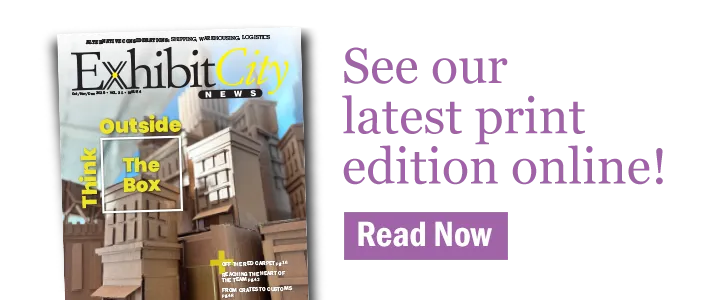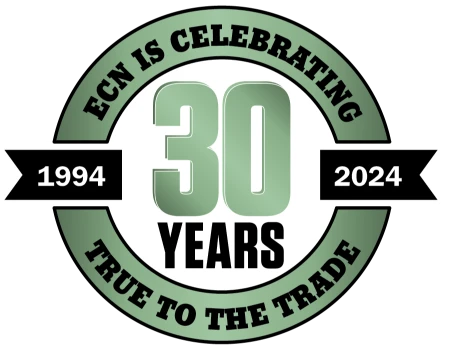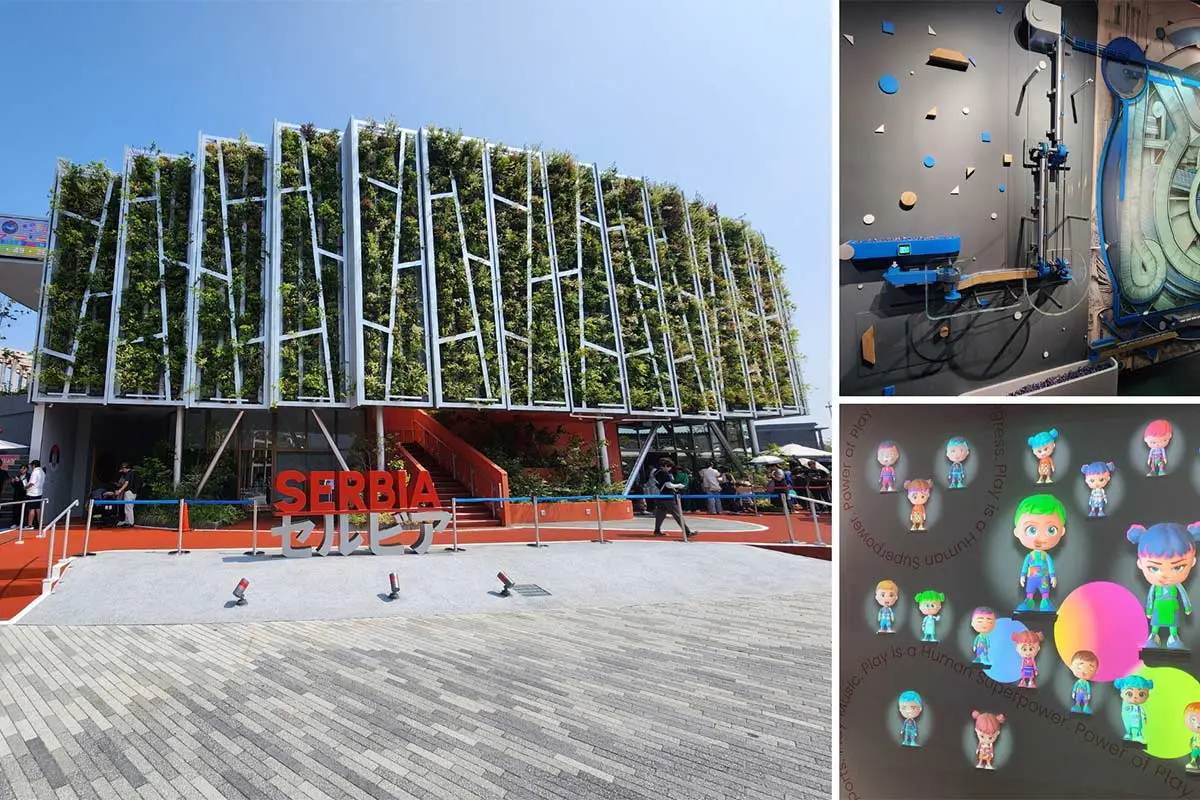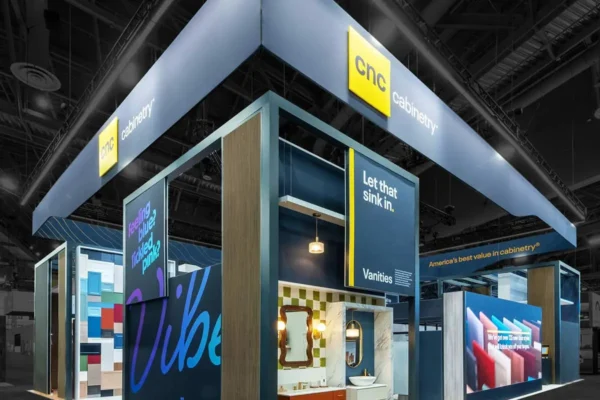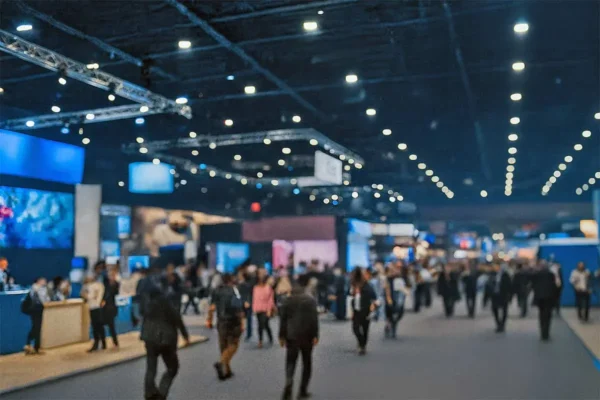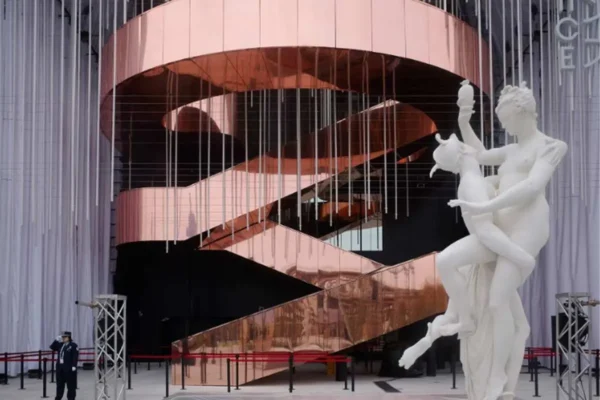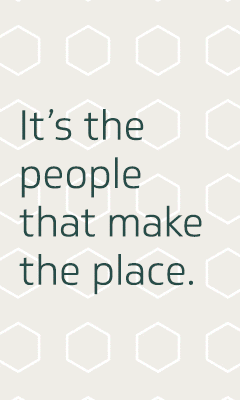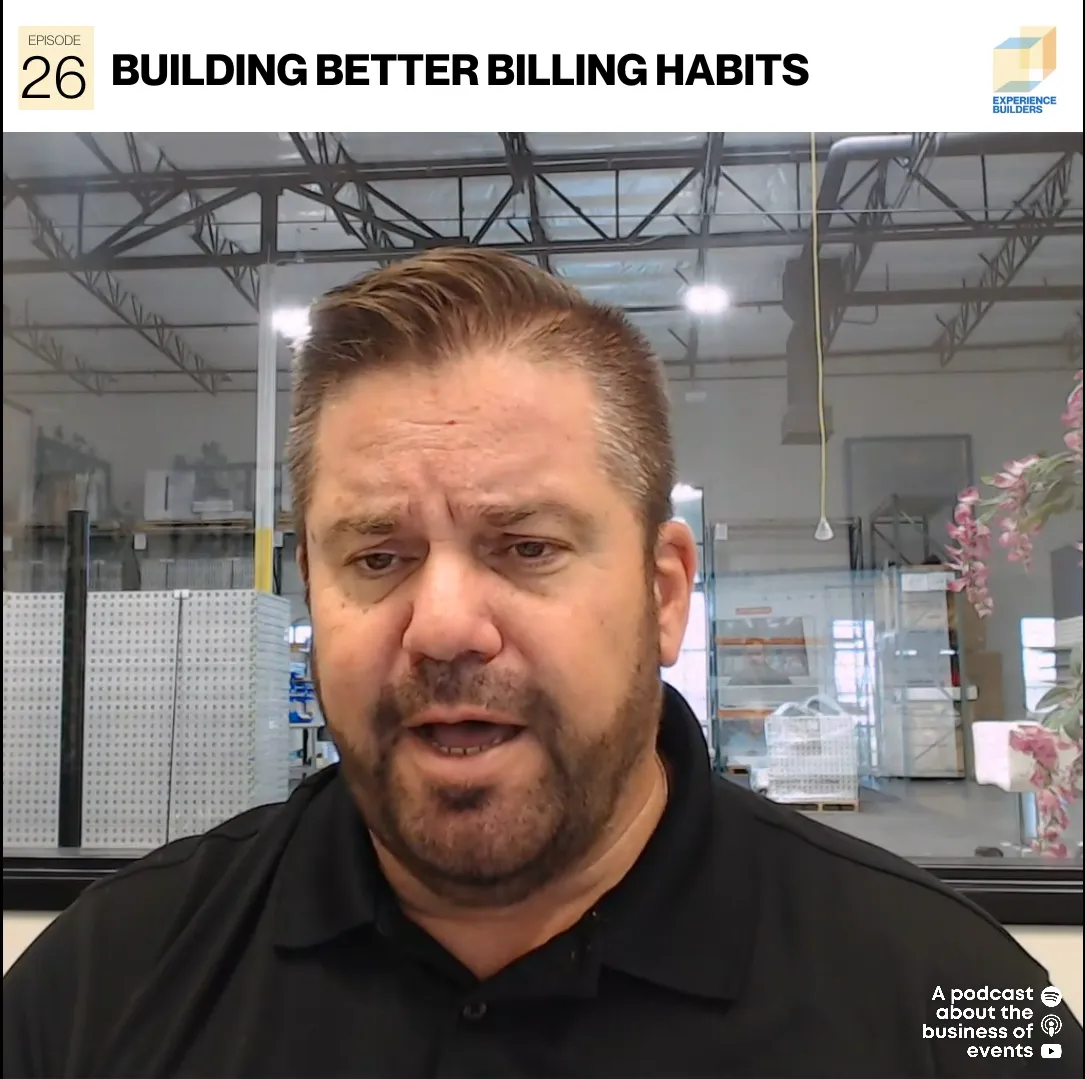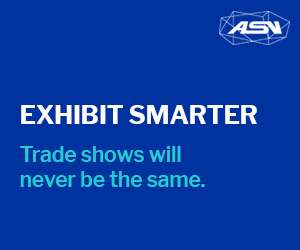Billed as “The Olympics of Experiential Design,” the World Expolympics honors the artistry, innovation, and cultural storytelling that define the legacy of world expo pavilions. Hosted at this year’s Expo 2025 in Osaka, Japan, the event brought together dignitaries, designers, and experiential leaders from across the globe to celebrate excellence in storytelling and design.
Organized by The Experiential Design Authority (TEDA), the World Expolympics competition spotlights pavilions and experiences that exemplify the very best of human creativity and collaboration. Winners were selected by an international jury of 32 distinguished architects, designers, and industry professionals, with awards spanning 16 categories — from architectural expression to activation design.
“This year’s winners represent the pinnacle of experiential design,” said Travis Stanton, Executive Director of TEDA. “Each project demonstrates not only remarkable creativity but also a deep commitment to connecting people, cultures, and ideas through the power of storytelling and design.”
While several countries earned multiple honors — including Portugal, Saudi Arabia, Singapore, Spain, and the United States — four stood apart as the year’s most exceptional experiences, each earning a coveted Gold Award in its respective pavilion category: Serbia (Best Small Pavilion), Netherlands (Best Medium Pavilion), Saudi Arabia (Best Large Pavilion), and Earth Mart (Best Corporate/Theme Pavilion).
Together, these winners showcase the future of experiential design — where architectural ingenuity, emotional storytelling, and cultural authenticity converge to inspire millions.
From Serbia’s quiet introspection to Saudi Arabia’s architectural spectacle, and from Earth Mart’s retail activism to Singapore’s participatory dreamscape — the World Expolympics celebrated not just spaces, but stories. Each winner proved that experiential design, at its best, is an act of empathy — a dialogue between creators and the world they seek to inspire.
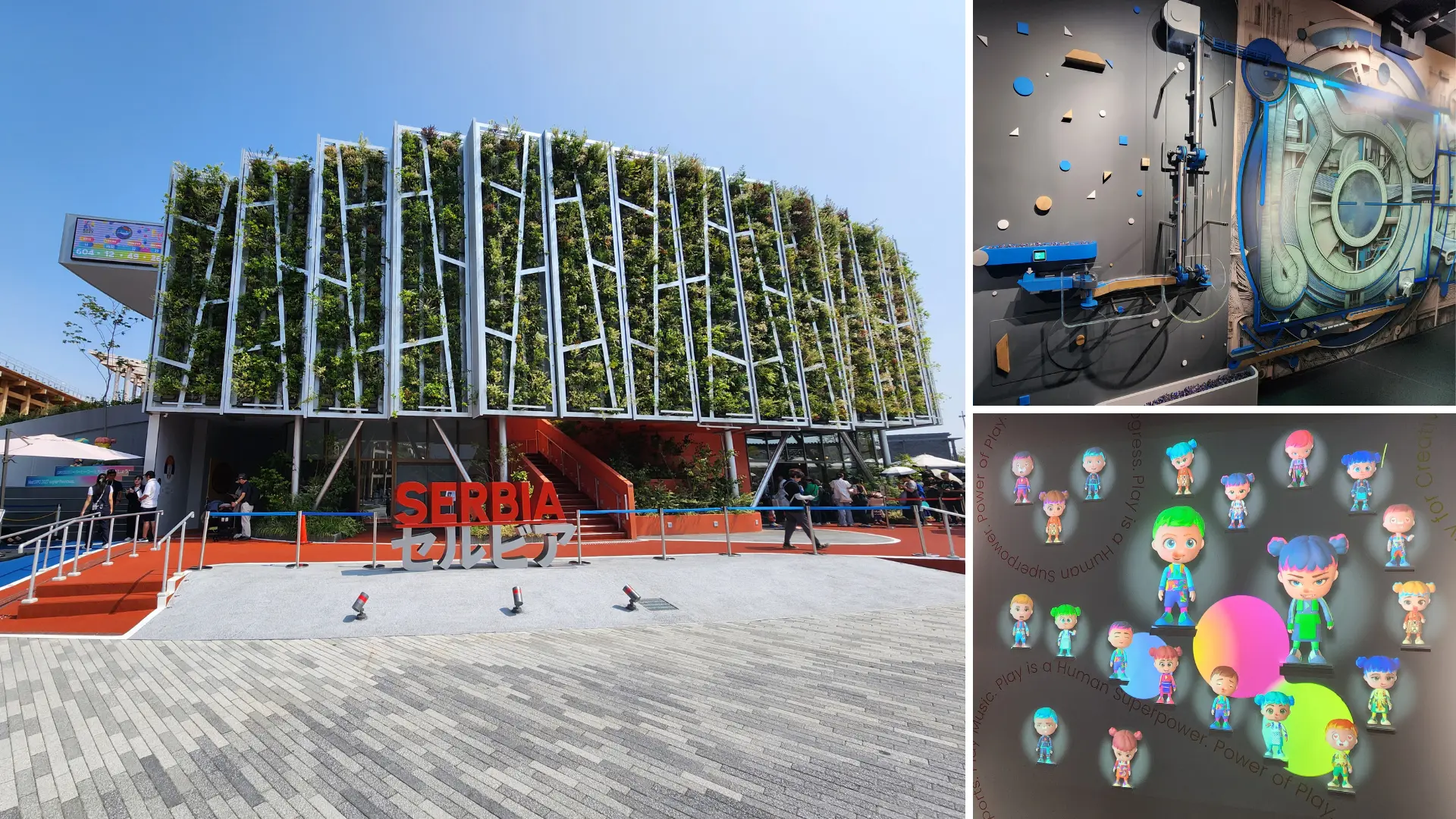
Best Small Pavilion
Gold Award: Serbia Pavilion
Organizer: Beyond Limits
Design: Aleatek Studio, Muse Design, Galerija 12 Future Media Studio
Fabrication: GL Events, Galerija 12 Future Media Studio
In a World Expo often defined by architectural grandeur, the Serbia Pavilion at Expo 2025 Osaka offered something refreshingly different: joy. Winner of the Gold Award for Best Small Pavilion, Serbia’s entry celebrated the universal language of play — not as a diversion, but as a catalyst for curiosity, creativity, and human connection.
Rather than presenting a static exhibition, the pavilion functioned as a living playground of ideas. Every surface, motion, and sound invited participation. Visitors triggered by depositing a marble into a chute, which manipulated mechanical sculptures and activated digital content that revealed aspects of Serbian culture, innovation, and design thinking. It was an environment where interactivity felt effortless and discovery happened through delight.
At the heart of the experience was Serbia’s belief that play is the root of innovation — that imagination, experimentation, and joy are inseparable from progress. Judges praised the pavilion for translating this philosophy into a multisensory environment that was both fun and profound. Rather than overwhelming guests with technology, it used it gracefully: simple sensors, kinetic elements, and responsive projections that rewarded curiosity with surprise.
Architecturally, the pavilion embraced lightness and openness. Its modest scale was balanced by clever spatial choreography — a sequence of zones that guided visitors through movement, reflection, and shared laughter. Natural materials, bright accents, and kinetic installations echoed Serbia’s design language of authenticity and ingenuity.
More than a national showcase, the Serbia Pavilion served as a reminder that the future belongs to those who play. In Osaka, it stood as both an invitation and an affirmation — that curiosity and creativity are not luxuries, but essential human instincts that unite us all.
As one juror summed up: “Serbia turned play into poetry — and proved that serious ideas can come wrapped in joy.”
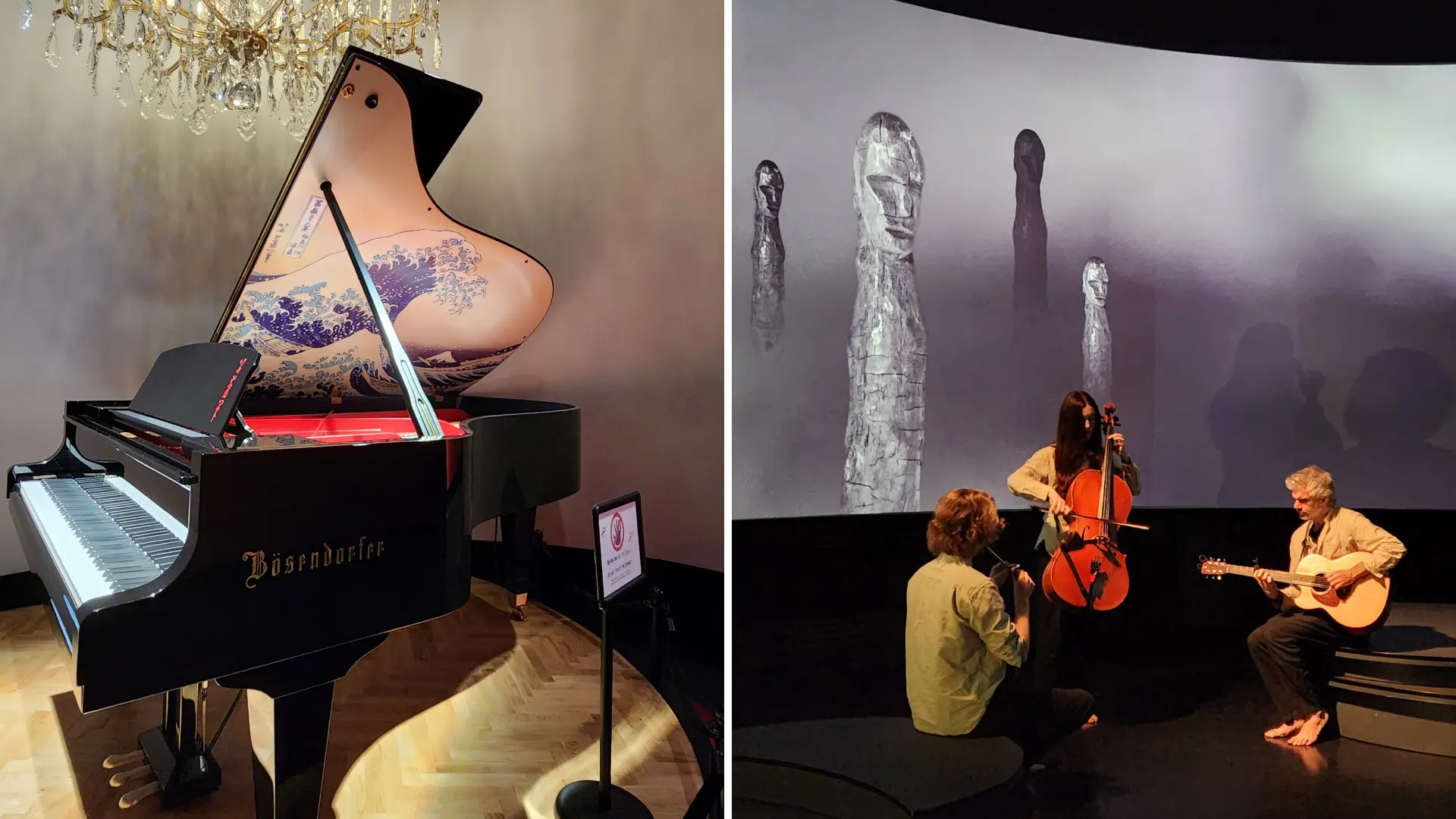
Silver Award: Austria Pavilion
Organizer: Austria Expo 2025
Design: BMW Designers & Architects, facts and fiction
Fabrication: Shinohara Shoten
Judges called the Austria Pavilion “outstanding” and “incredibly photogenic,” lauding its strong visual design and architecture, as well as its connection to the country’s musical heritage. The pavilion’s spiraling wooden musical staff became an icon and landmark on the Expo 2025 grounds. In the words of one judge, “Austria demonstrated solid creative, technical precision, and a clear commitment to sustainability.
Bronze Award: Ireland Pavilion
Organizer: Government of Ireland
Design: Office of Public Works Ireland
Fabrication: TSP Taiyo Japan
The Ireland Pavilion’s choreographed performances, immersive spaces, and musical sequences earned accolades from judges, who also appreciated how collaborative dance turned guests into active participants in the pavilion’s “Creativity Connects People” narrative. Judges also appreciated how the pavilion brought the sights, sounds, and even smells to life for guests.
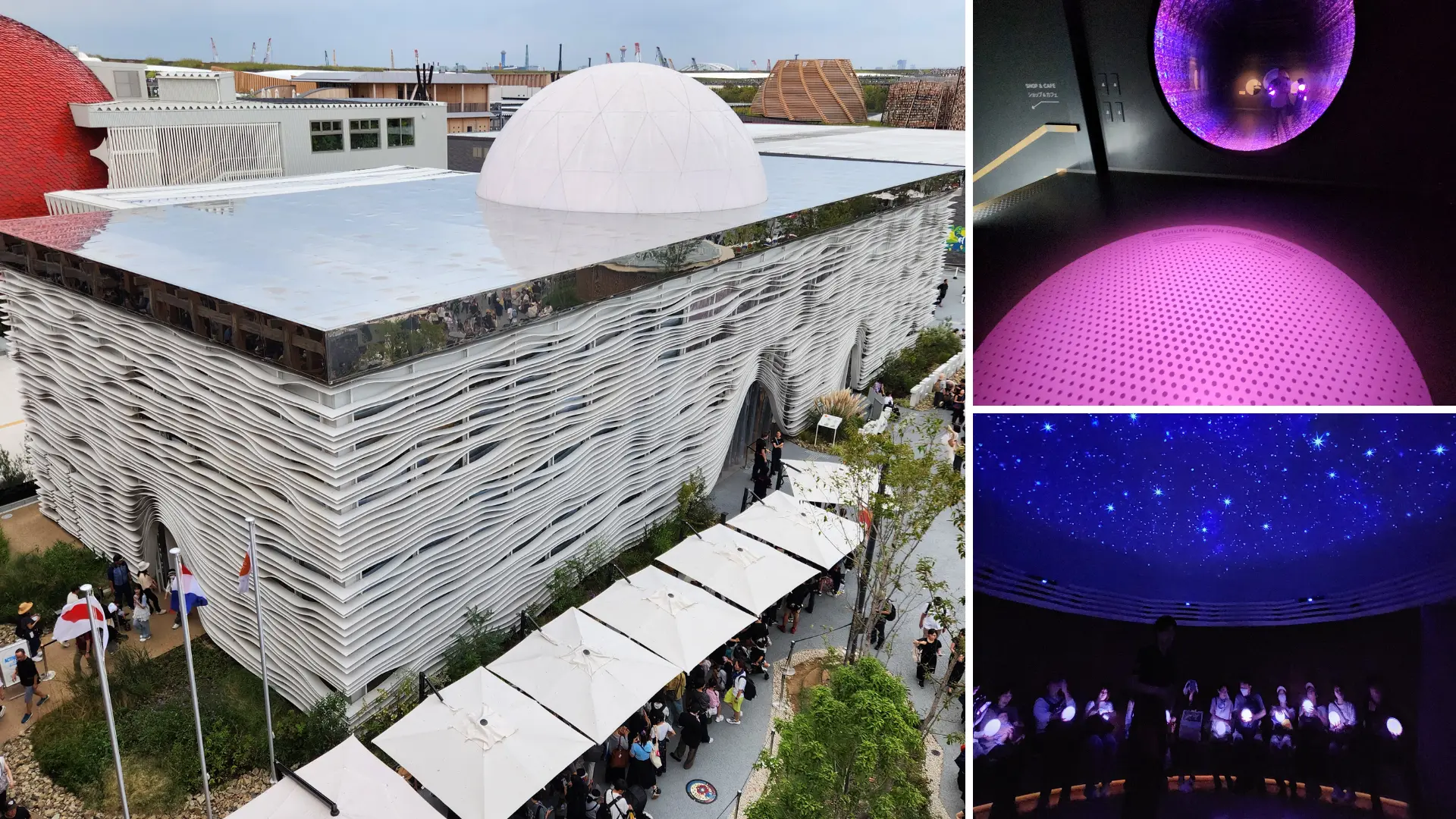
Best Medium Pavilion
Gold Award: Netherlands Pavilion
Organizer: A New Dawn (And) BV
Design: RAU Architects, Tellart
Fabrication: DGMR, Asanuma Corp.
The Netherlands earned the Gold Award for Best Medium Pavilion by turning its theme — “Common Ground: Creating a New Dawn Together” — into a living, breathing embodiment of collaboration and sustainability. Seamlessly aligned with the Expo’s overarching theme, “Designing Future Society for Our Lives,” the pavilion invited visitors not just to observe innovation, but to participate in it.
Rooted in the Dutch ethos of collective problem-solving, Common Ground built upon centuries of cooperation born from necessity. Living largely below sea level, the Netherlands has long depended on partnerships to overcome environmental challenges. In Osaka, that same spirit inspired a global message: the challenges of climate change, energy transition, and food security are too big to face alone — progress begins when nations work together, with each other and with nature.
The pavilion’s journey began with the Wall Mural and Water Basin, two installations that visualized the transformation of chaos into harmony. As shifting water patterns synchronized into calm ripples, visitors saw the power of shared effort rendered in liquid motion. Guests then received a personal Energy Orb, a handheld device that powered and responded to various installations throughout the experience — symbolizing how individual energy fuels collective change.
Inside, the interactive and educational Water Walls celebrated the Netherlands’ deep relationship with water, tracing the evolution from survival to stewardship. In the pavilion’s luminous sphere, the full-dome film “A New Dawn” immersed guests in an AI-generated meditation on resource consumption and renewal. The experience concluded with the Innovation Tracks and Promise Mirror, where visitors pledged to act on the common ground mindset by co-creating a generative digital artwork.
Judges praised the pavilion’s “bold, integrated concept and exceptional storytelling,” calling it “playful yet purposeful — both spiritual and activist.” In Osaka, the Netherlands proved that the most powerful innovations begin not with competition, but with collaboration.
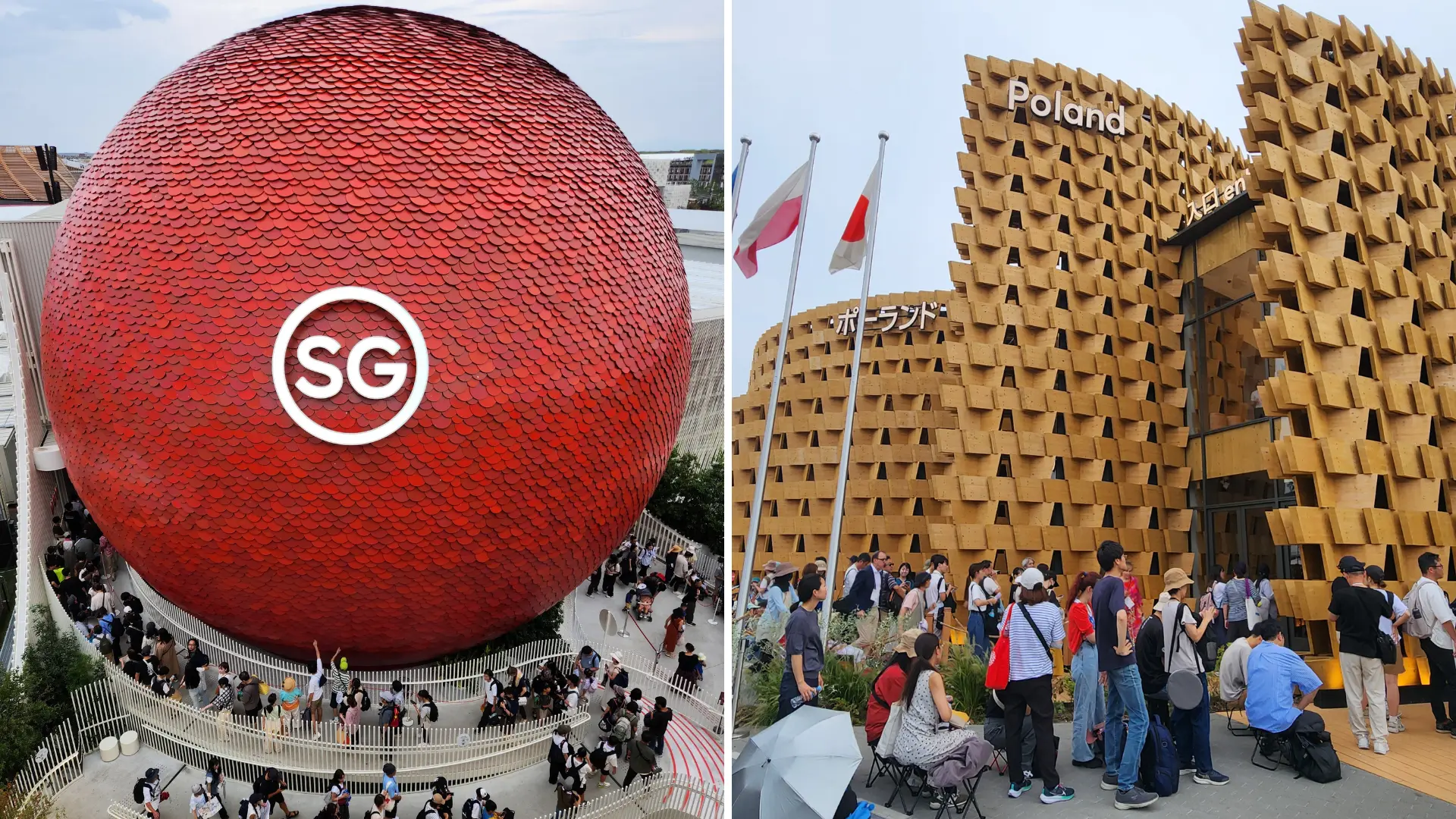
Silver Award: Singapore Pavilion
Organizer: Singapore Tourism Board
Design: KR+D Pte Ltd., DP Architects, Presplay, Milla & Partner
Fabrication: Kingsmen Exhibits Pte Ltd.
Judges called the Singapore Pavilion — whose striking “little red dot” exterior made a massive impact on guests — “charming with attention to detail in every aspect.” According to one judge, “It shows great care, and the storytelling is beautifully cohesive.” Another remarked, “Singapore executed a complex concept with a powerful blend of bold design, emotional storytelling, and sustainability.”
Bronze Award: Poland Pavilion
Organizer: Polish Investment and Trade Agency
Design: Interplay Architects, Komy Studio, GDBY, Kafti, Wiesław Bartkowski
Fabrication: Finasi SPI JV Turnkey Projects Contracting (FZCO), Nagashima Co., JSC Corp.
Judges awarded Poland the Bronze Award for what they called a well-designed and crafted pavilion with art-like installations that engaged the senses. The exterior’s spiral-like design comprised Japanese pine panels assembled using traditional techniques with a contemporary twist. In the words of one judge, “The Poland Pavilion was a place of unique harmony that succeeds because its beauty is not just observed but felt.”
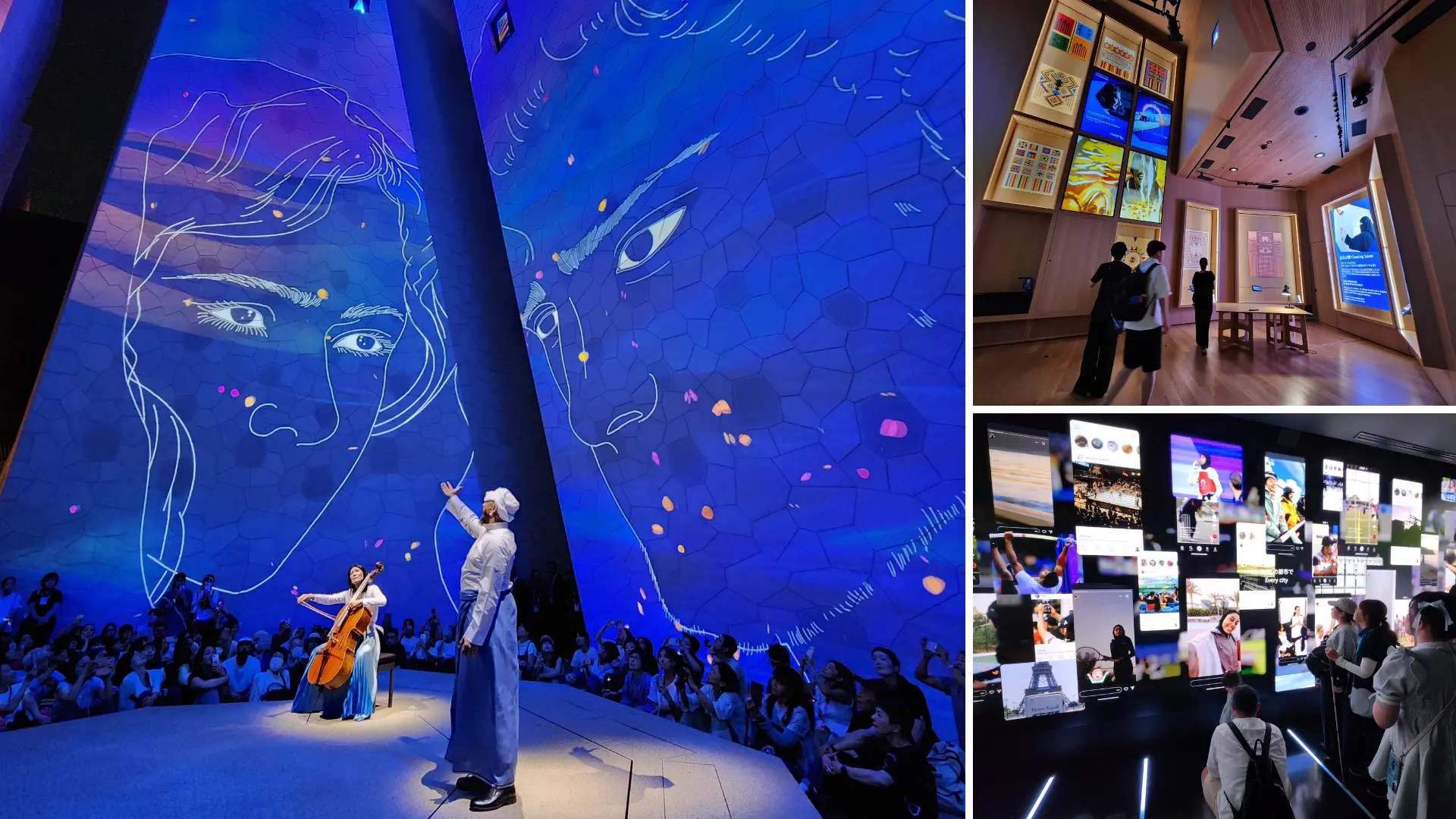
Best Large Pavilion
Gold Award: Saudi Arabia Pavilion
Organizer: Insignia Worldwide, Done & Dusted, THA, Beyond Limits, TGP International
Design: Foster + Partners, Black Engineering, Squint Opera, 59 Productions
Fabrication: Ando Hazama, Tanseisha Co., BeWunder, Tait
The Kingdom of Saudi Arabia Pavilion stood out as a masterful integration of architecture, performance, and immersive storytelling, earning the Gold Award for Best Large Pavilion. The experiential space served as a cultural bridge, connecting Saudi and Japanese visitors and illustrating how a nation with ancient roots is shaping a resilient and inclusive future.
The pavilion offered a multi-sensory experience titled “An Epic Journey of New Discoveries.” Visitors entered through a landscaped forecourt and meandering stone-lined streets, arriving at the Saudi Courtyard, an open-air living theater at the heart of the experience. Its centerpiece, Tales of Water, combined 360-degree projections, live music, and dynamic choreography to narrate stories of sacrifice, resilience, and reunion, enveloping audiences in a deeply emotional and shared experience.
Beyond the courtyard, thematic galleries and interactive experiences demonstrated the Kingdom’s commitment to innovation and cultural exchange. The Botanist AR Garden transformed wait times into lessons on environmental stewardship, while the Cultural Studios allowed visitors to engage directly with Saudi artists and musicians. The journey continued through the Pavilion’s reimagined Souk, showcasing cultural heritage, Expo 2030 initiatives, and Pavilion-branded merchandise, linking tradition with future aspirations.
Sustainability and inclusivity were central to the design. Constructed from low-carbon, modular materials and powered by rooftop solar panels with passive cooling, the pavilion achieved net-zero operation. Exhibits such as Sustainable Seas and Pinnacle of Innovation highlighted coral regeneration, mangrove conservation, genomics, and clean energy breakthroughs. Universal design principles ensured accessibility for all visitors, including neurodivergent guests.
Judges praised Saudi Arabia’s pavilion for its “seamless integration of art, performance, and technology” and called it “an exquisite masterpiece in concept, design, and implementation.” In Osaka, the Kingdom demonstrated how architecture and storytelling could inspire connection, spark dialogue, and offer a vision of a future society that balances innovation, culture, and sustainability.
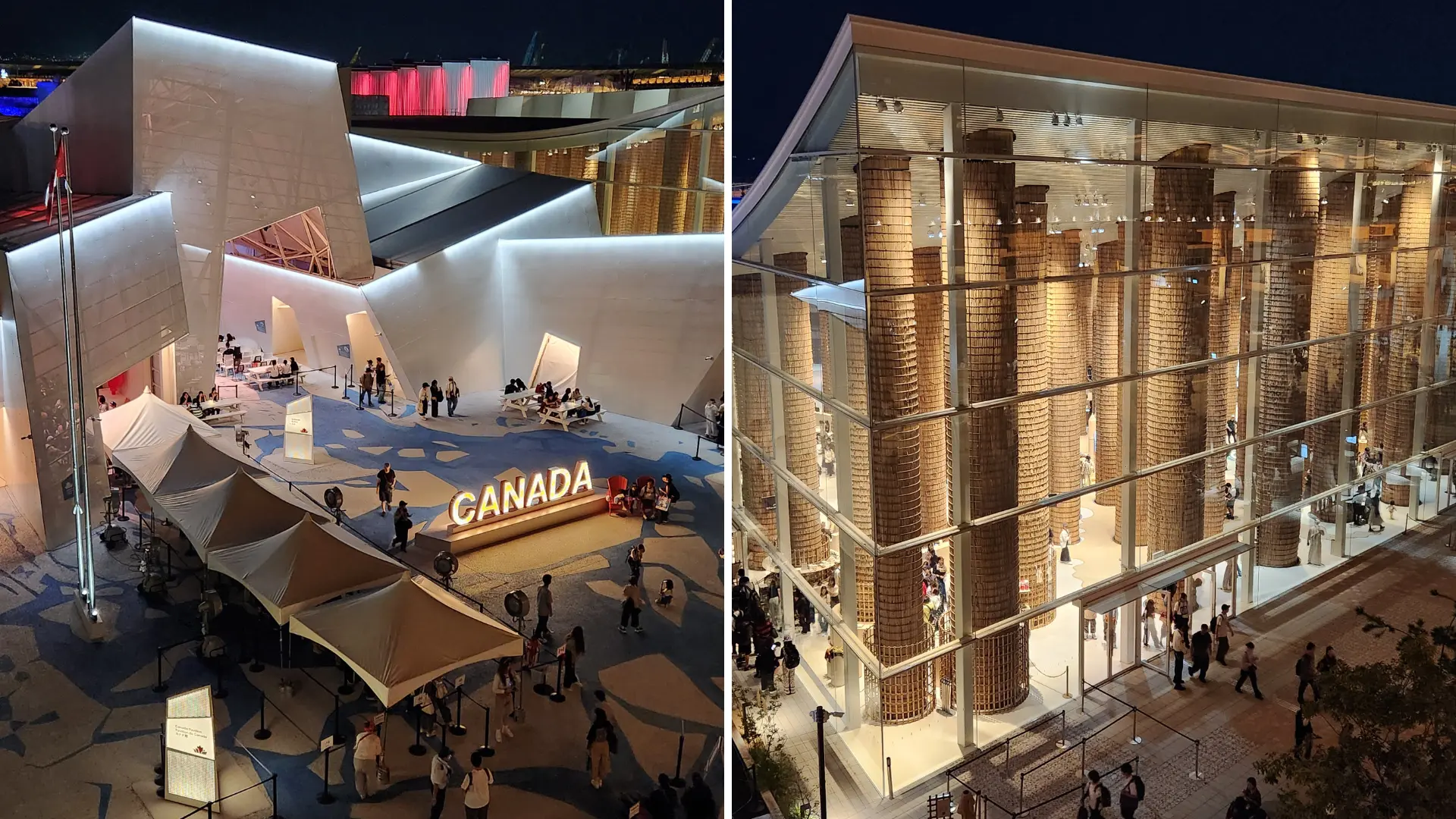
Silver Award: Canada Pavilion
Organizer: Canada Expo 2025
Design: Mirari, Rayside Labossière, Guillaume Pelletier Architecte, So & Co., The Fury, Soleil Launière, Robert Lepage, Steve Blanchet
Fabrication: ES Global
Canada earned Silver for its stand-out exterior design, digital forests, and Northern Lights simulation, with judges noting the immersive, family-friendly AR experience inside that conveyed a message about resilience and a sense of wonder. Judges also appreciated how the AR experience allows each guest to gain a unique perspective, meaning no two visits are identical.
Bronze Award: UAE Pavilion
Organizer: Earth to Ether Collective
Design: Earth to Ether Collective, Atelier Brückner, R/O/U/Y/A, BeWunder
Fabrication: Rimond Group, SLA, Process Iguchi, Shelter
In the words of one judge, the UAE Pavilion is “a spectacular synthesis of architecture, exhibit design, and cultural resonance.” The palm-tree-inspired space bridges heritage and innovation by celebrating the UAE’s journey from tradition to innovation. Judges also appreciated the space for its unified, considered, and intentional approach in which every component told a story.
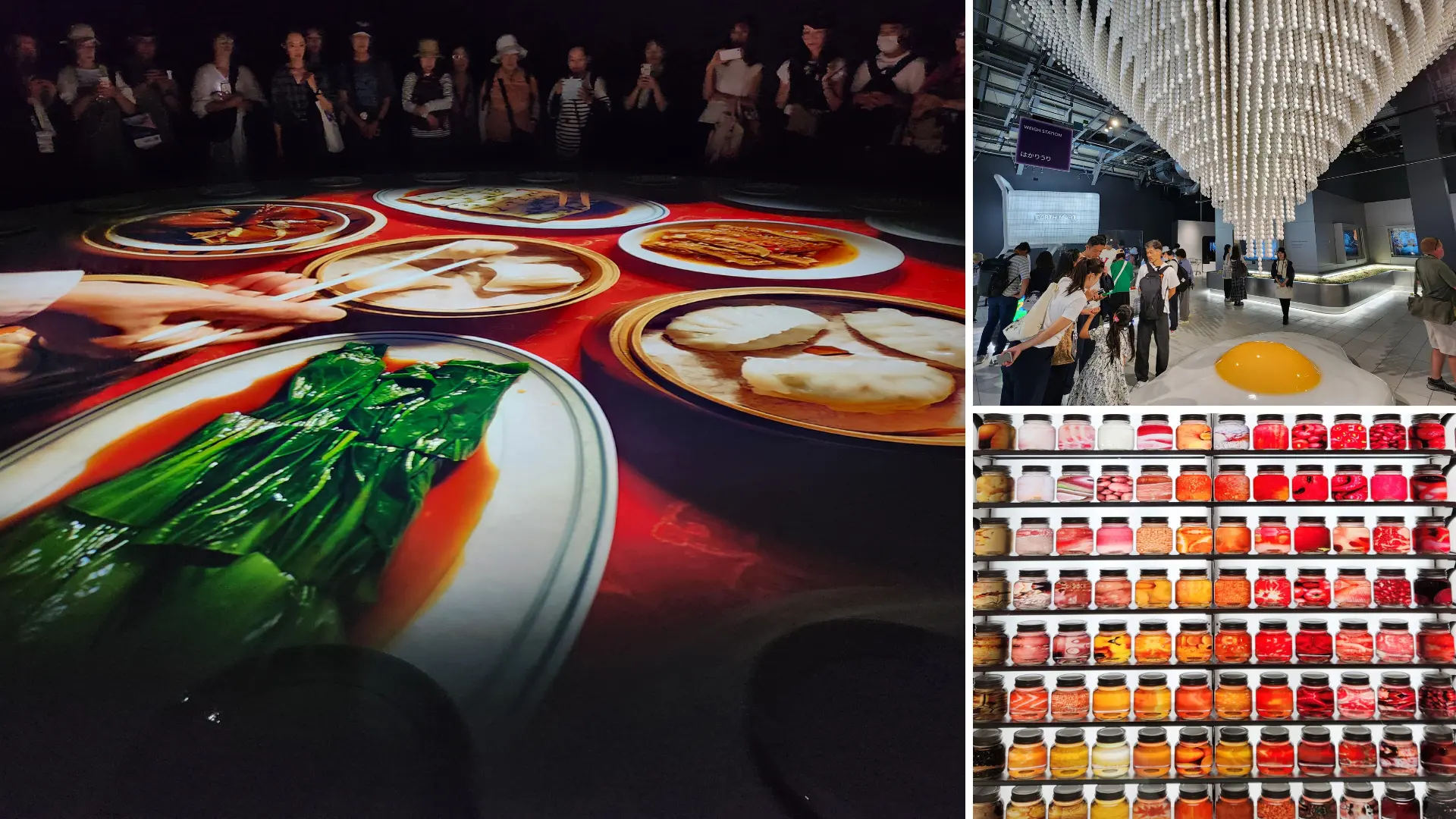
Best Corporate/Theme Pavilion
Gold Award: Earth Mart
Organizer: Expo 2025 Osaka
Design: Kengo Kuma & Associates, Kundo Koyama
Fabrication: Dentsu, Nomura Co., Orange and Partners Co.
Earth Mart transformed the traditional pavilion into an immersive exploration of sustainability, earning the Gold Award for Best Corporate or Theme Pavilion. Based on the archetype of a common marketplace, it became a platform where visitors could experience how individual and collective choices shape the planet’s future.
Visitors first encountered a thatched-roof entrance evoking a traditional retail or grocery store, immediately signaling that Earth Mart would blend familiarity with forward-thinking ideas. Inside, around 20 content zones offered hands-on exploration of global sustainability challenges. The Marketplace of Life focused on the origins and impact of food, encouraging guests to engage with vegetables, fish, and livestock in ways that provoked reflection on diet, resource use, and food systems. The Marketplace of the Future showcased innovations for sustainable food production, blending Japanese culinary traditions, modern gastronomy, and technological solutions — from AI-assisted kitchens to energy-efficient fermentation processes.
Designed to inspire pause and reconsideration of staples we take for granted, the pavilion featured incredible installations that looked more like modern art than everyday items: Hundreds of eggs comprised a spectacular chandelier, while schools of silvery fish seemed frozen in midair, demanding visitors see the miraculous in the previously mundane.
Judges praised Earth Mart for its clarity of concept and exceptional storytelling, highlighting its ability to make complex global issues tangible and inspiring. By combining education, culture, and play, the pavilion offered an optimistic vision of a sustainable future.
Produced by Koyama Kundō and co-created with a network of culinary and sustainability experts, Earth Mart proved that shopping could be both engaging and meaningful. At Expo 2025, it demonstrated that experiential design can transform everyday acts into opportunities for reflection, action, and hope.
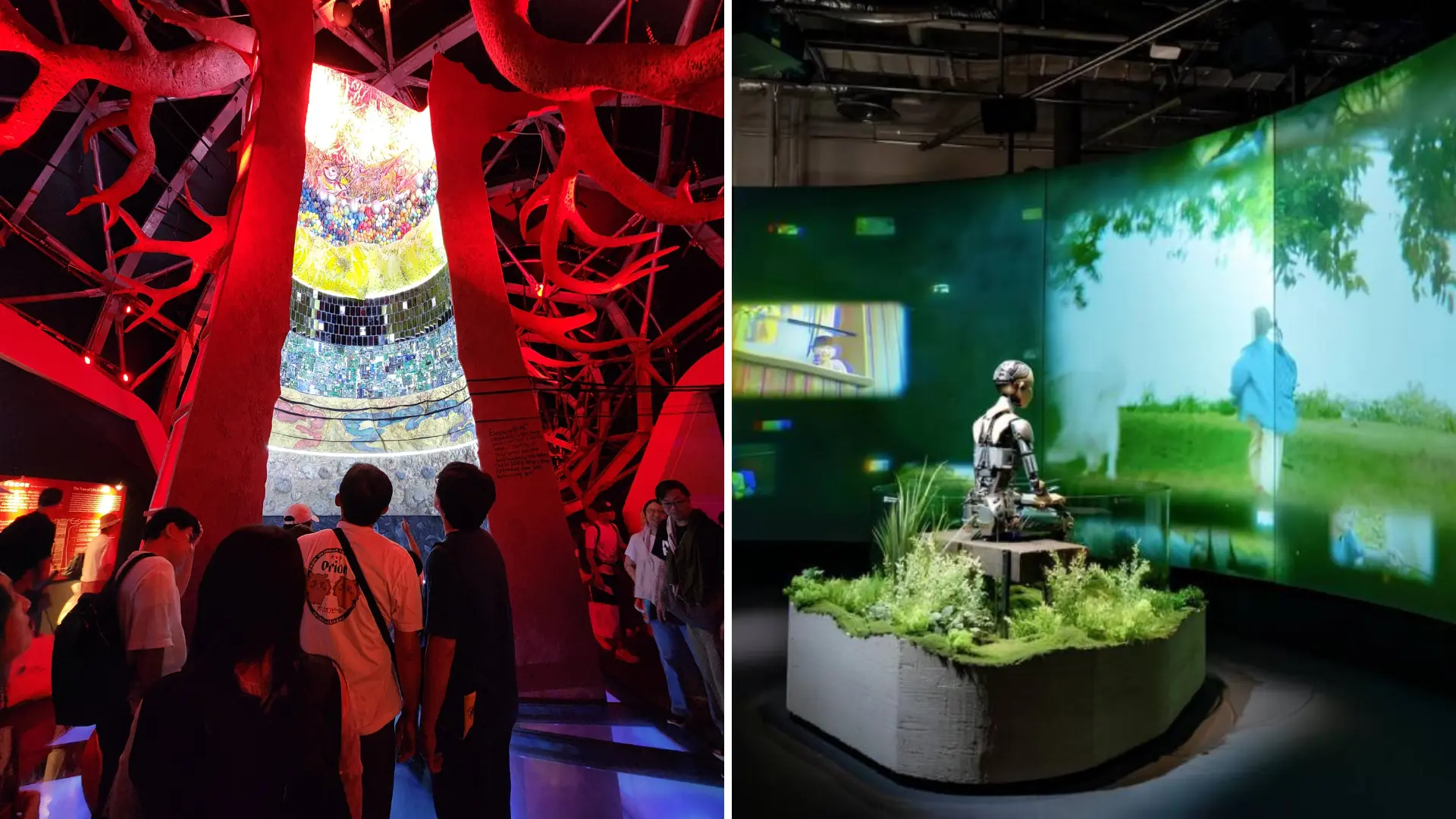
Silver Award: Pasona Natureverse
Organizer: Pasona Group
Design: The Design Labo Inc.
Fabrication: Maeda Corp.
Judges described Pasona Natureverse as one of the most surprising and delightful pavilions at Expo 2025, noting its ability to resonate with audiences young and old alike, with a diverse array of spaces, experiences, and healthcare innovations. The kinetic LED installation, in particular, won massive praise from jurors who called it “the future of experiential AV.”
Bronze Award: Future of Life Pavilion
Organizer: Expo 2025 Osaka
Design: Hiroshi Ishiguro, Jiro Endo
Fabrication: Ishimoto Architectural & Engineering Firm, Haseko Corp. Osaka Engineering Division
Judges were impressed by the depth of the experience inside the Future of Life Pavilion, as well as its contemplative message and engaging experiences. Inhabited by an assortment of robotic and animatronic humanoids, the space inspires wonder and imagination. In the words of one judge, “This pavilion succeeds in making guests ponder the possibilities.”
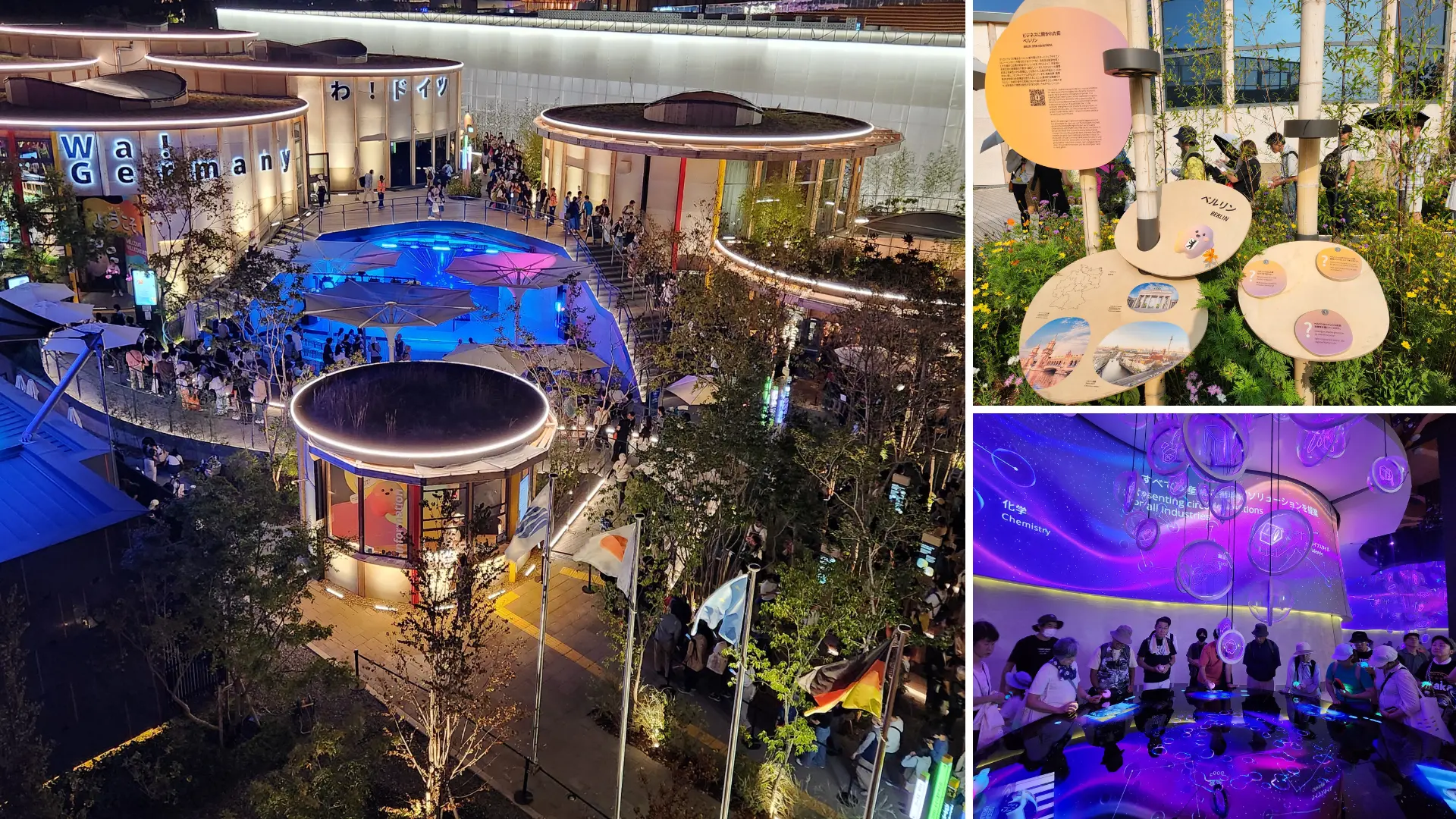
Best Sustainable Pavilion
Gold Award: Germany Pavilion
Organizer: Koelnmesse GmbH
Design: LAVA, facts and fiction, Henning Larsen Landscape
Fabrication: facts and fiction, GL Events
Germany earned the Gold Award for Best Sustainable Pavilion by redefining what it means to design with circularity at every scale. The pavilion was conceived as a fused architectural-landscape ecosystem, where seven cylindrical volumes emerged seamlessly from a verdant courtyard, creating sculpted vistas, light-filled voids, and framed experiences that guided visitors on a spiraling journey from entry to communal garden. This spatial choreography wasn’t just aesthetic — it embodied the pavilion’s central theme of circularity, allowing visitors to experience sustainability as a lived, physical narrative.
Every element of the Germany Pavilion was engineered for reuse, biodegradation, or reintegration. Over 90 percent of the pavilion’s materials were designed for productive afterlife: glulam timber cylinders and modular steel structures will be repurposed in Japan for future events like the 2026 Asian Games, exhibits will tour schools, furniture returns to lenders, and MEP systems are rented or reintegrated. The modular steel foundation replaced conventional concrete slabs, meeting seismic standards while drastically reducing embodied carbon and eliminating permanent waste — a blueprint for industrial-scale sustainable temporary architecture.
Material innovation was central to the pavilion’s success. Over 300 candidate materials were evaluated, with selections including bamboo, rammed earth panels co-developed with the University of Kassel, hempcrete, mycelium insulation, and paving stones made from recycled concrete and sawdust. Cradle-to-cradle tracking ensured transparency at every stage of the lifecycle. Landscapes, designed in collaboration with Henning Larsen and Ryokukou, included 21 loaned trees and native plants, green roofs, permeable paving, and rainwater harvesting systems, mitigating heat islands, enhancing biodiversity, and remaining fully relocatable.
Additionally, the pavilion functioned as a living laboratory, integrating peer-reviewed research on material reuse, modular workflows, and circular certification systems such as Concular, DGNB, and CASBEE. Immersive signage and narrative guided millions of visitors through the pavilion’s story, educating them on sustainable material cycles and ecological accountability. By combining operational excellence, research-driven innovation, and a fully functioning circular ecosystem, Germany set a global precedent for low-carbon, reusable, and educational temporary architecture.
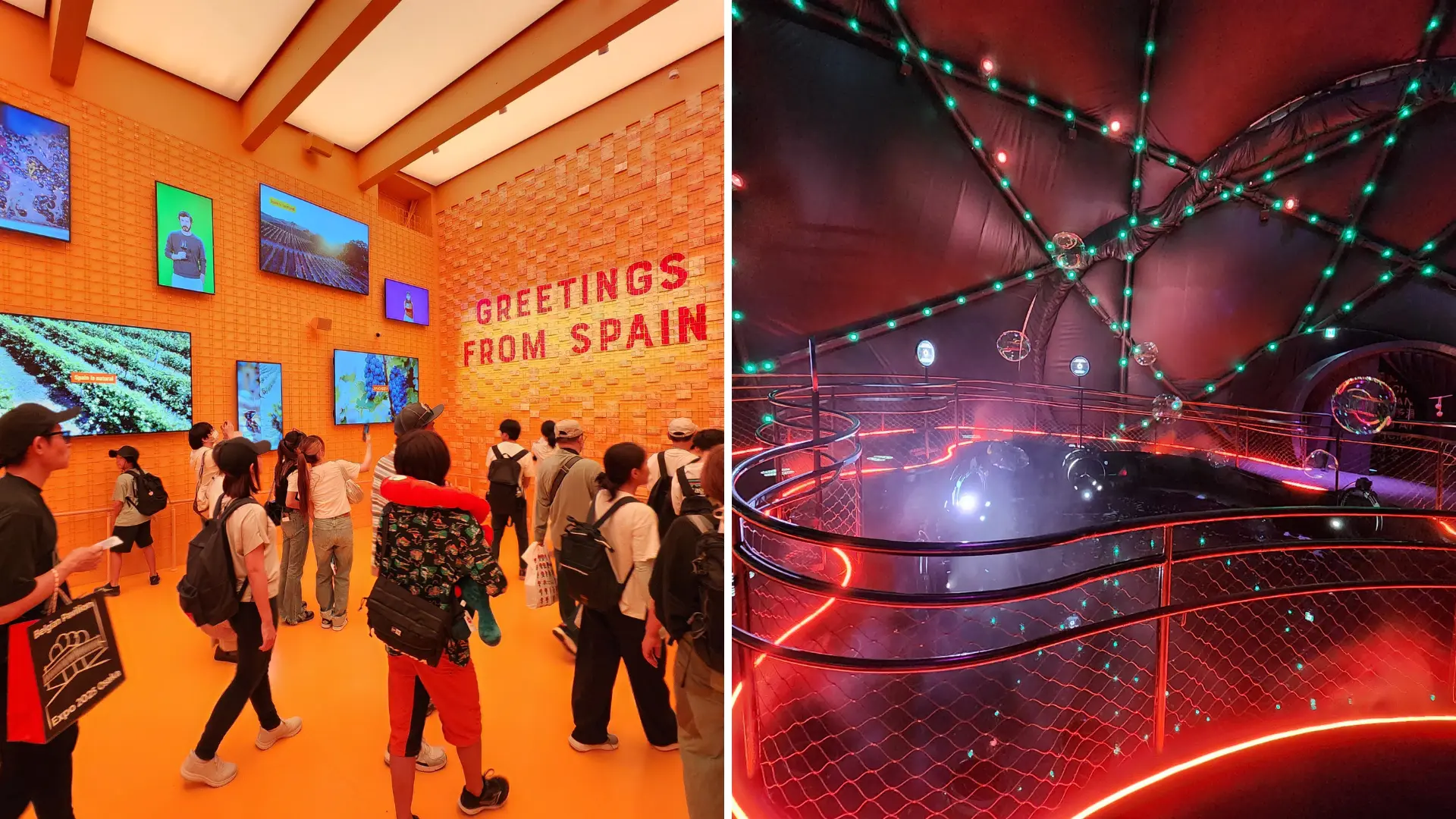
Silver Award: Spain Pavilion
Organizer: Sociedad Mercantil Estatal de Acción Cultural S.A.
Design: Extudio, Enorme Estudio, Smart and Green Design
Fabrication: Murakami General Construction Co.
The Spain Pavilion’s use of local timber, recycled fabrics, and recycled plastic resonated with judges, one of whom noted the deceptive porosity of the exterior design, which smartly optimized airflow and reduced energy consumption. Another judge commended the pavilion on proving that sustainable structures can be eco-friendly and incredibly stunning at the same time.
Bronze Award: Switzerland Pavilion
Organizer: Federal Department of Foreign Affairs, Presence Switzerland, The Embassy of Switzerland in Japan, Swissnex
Design: Manuel Herz Architects, Bellprat Partner
Fabrication: Nussli Group, Robin Winogrund
Elegant and efficient, the pavilion was lauded by judges for its lightweight spherical construction, which minimized environmental impact while showcasing Swiss innovation and creativity. What’s more, that sustainable architectural solution inspired experiences inside, including an interactive bubble-blowing engagement.

Best Exterior Architecture
Gold Award: Saudi Arabia Pavilion
Organizer: Insignia Worldwide, Done & Dusted, THA, Beyond Limits, TGP International
Design: Foster + Partners, Black Engineering, Squint Opera, 59 Productions
Fabrication: Ando Hazama, Tanseisha Co., BeWunder, Tait
Already lauded for its storytelling, the Saudi Arabia Pavilion also earned Gold for Best Exterior Architecture, a recognition of its breathtaking façade and immersive spatial storytelling. The pavilion’s exterior, designed by Foster + Partners, drew inspiration from the scale and patterns of Saudi towns and villages, translating traditional urban fabric into a network of streets and courtyards that guided visitors through both the physical and cultural landscape of the Kingdom.
The design team leveraged the negative spaces between volumes to form streets that naturally directed movement, while computational fluid dynamics simulations ensured airflow and thermal comfort throughout the year. Visitors entered through a forecourt planted with native Saudi Arabian flora, moving through narrow streets that open into the Saudi Courtyard, the pavilion’s central space. The courtyard offers quiet moments of reflection by day and transforms into a stage for performances at night. Along the streets, windows and doorways provide glimpses into immersive interior experiences, while the external layout encourages exploration, chance encounters, and personal discovery.
The pavilion engages the senses at every turn. Light and shadow play across textured stone walls, native landscaping invites tactile interaction, and the scent of lemon trees evokes the Kingdom’s environment. A curated soundscape, including birdsong and traditional chants, completes the immersive experience, reinforcing the pavilion’s connection to place.
Sustainability was integral to the exterior design. The modular façade, composed of lightweight honeycomb aluminum panels clad in Riyadh stone, dissipates heat, remains cool to the touch, and can be disassembled, reused, or reconfigured for future projects. Solar panels provide renewable energy, and 99% of the pavilion’s mass — including structure, façade, and building systems — was designed for reuse or recycling. The result is a pavilion that is at once culturally resonant, environmentally responsible, and architecturally inspiring.
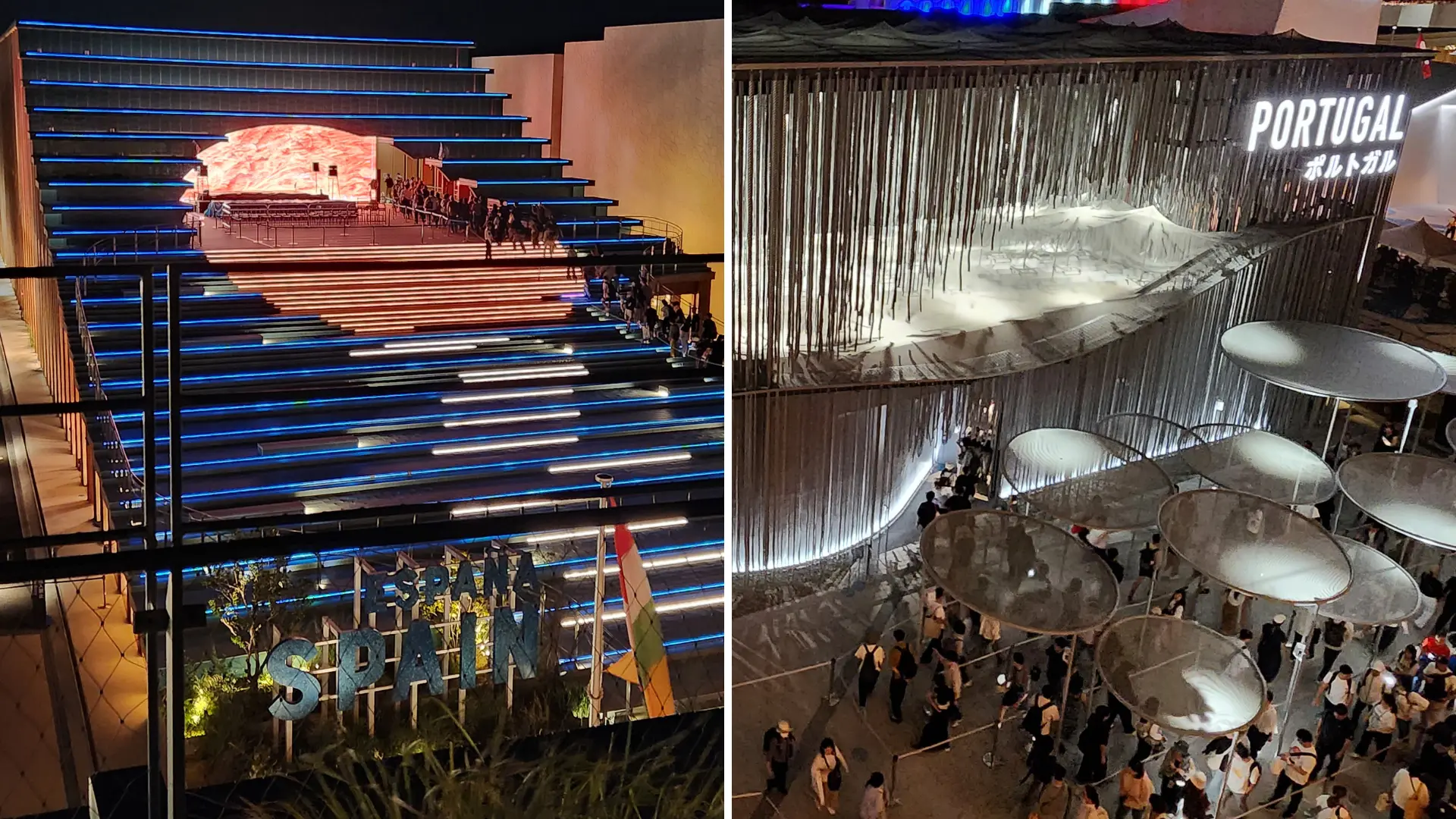
Silver Award: Spain Pavilion
Organizer: Sociedad Mercantil Estatal de Acción Cultural S.A.
Design: Extudio, Enorme Estudio, Smart and Green Design
Fabrication: Murakami General Construction Co.
Judges called the Spain Pavilion “beautifully captivating,” adding that the rising-sun concept was cleverly integrated and executed with great attention to detail, creating a stunning visual impact. What’s more, the steps served as an experience and staging area, enhancing the guest experience and hosting cultural performances throughout Expo 2025.
Bronze Award: Portugal Pavilion
Organizer: AICEP – Portugal National Investment Agency
Design: Kengo Kuma & Associates
Fabrication: Rimond Group
Designed by legendary Japanese architect Kengo Kuma, the Portugal Pavilion’s exterior incorporated lightweight repurposed ropes and recycled fishing nets. Judges appreciated the visual illusion that created a fluid and deeply evocative façade inspired by Portugal’s maritime soul that looked equally beautiful both day and night.
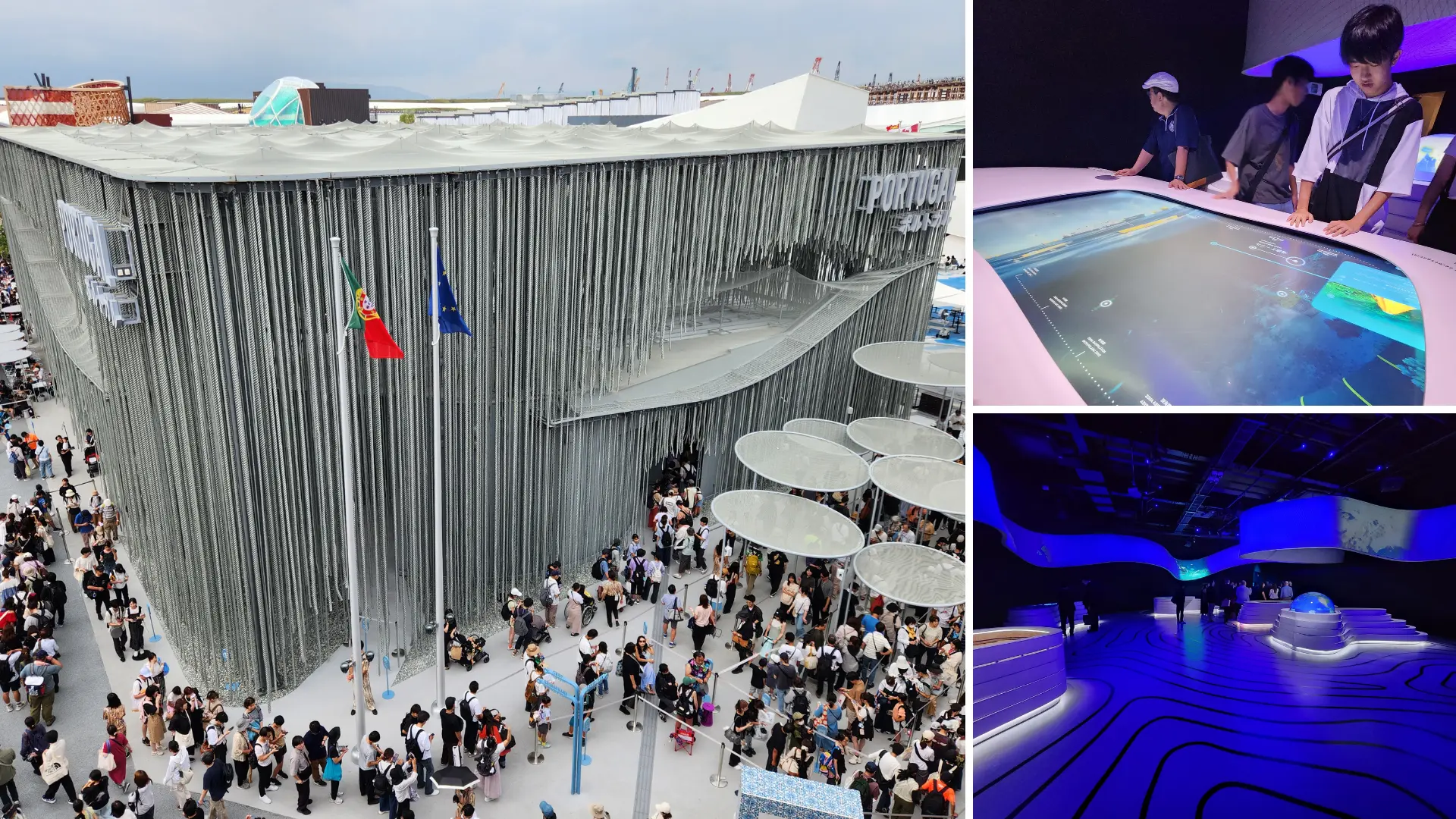
Best Thematic Concept
Gold Award: Portugal Pavilion (“Ocean: The Blue Dialogue”)
Organizer: AICEP – Portugal National Investment Agency
Design: Kengo Kuma & Associates
Fabrication: Rimond Group
The Portugal Pavilion earned Gold for Best Thematic Concept with “Ocean: The Blue Dialogue.” Inside an exterior structure clad in silver nautical ropes and recycled fishing nets, the pavilion offered an immersive experience that transformed maritime heritage into a powerful metaphor for global unity. Rather than presenting the sea as a boundary between nations, the pavilion positioned it as a shared lifeline — a vast, fluid space that connects us all.
Visitors embarked on a multisensory voyage through time, where Portugal’s storied Age of Exploration flowed seamlessly into a modern era defined by sustainability and stewardship. Projection-mapped water surfaces rippled beneath their feet, responsive lighting simulated the movement of tides, and a 360-degree theater enveloped audiences in a lyrical narrative of discovery, responsibility, and renewal.
This poetic fusion of artistry and advocacy reflected Portugal’s leadership in marine science, renewable energy, and ocean conservation. Judges commended its elegant storytelling art and poetic restraint, with one praising the pavilion’s balance of emotion and intellect, calling it “an exquisite example of emotional environmentalism.” Given such high praise, it’s not surprising the pavilion won two additional World Expolympics honors, including Bronze Awards in both the Best Exterior Architecture and Best Presentation categories.
Ultimately, “The Blue Dialogue” was more than a thematic concept. It was a quiet call to collective action. By framing the ocean as a bridge rather than a border, Portugal reminded visitors that sustainability begins with empathy. The pavilion reminded audiences that the sea is not a boundary but a bridge — and that the world’s most powerful dialogues often start where the waves meet the shore.
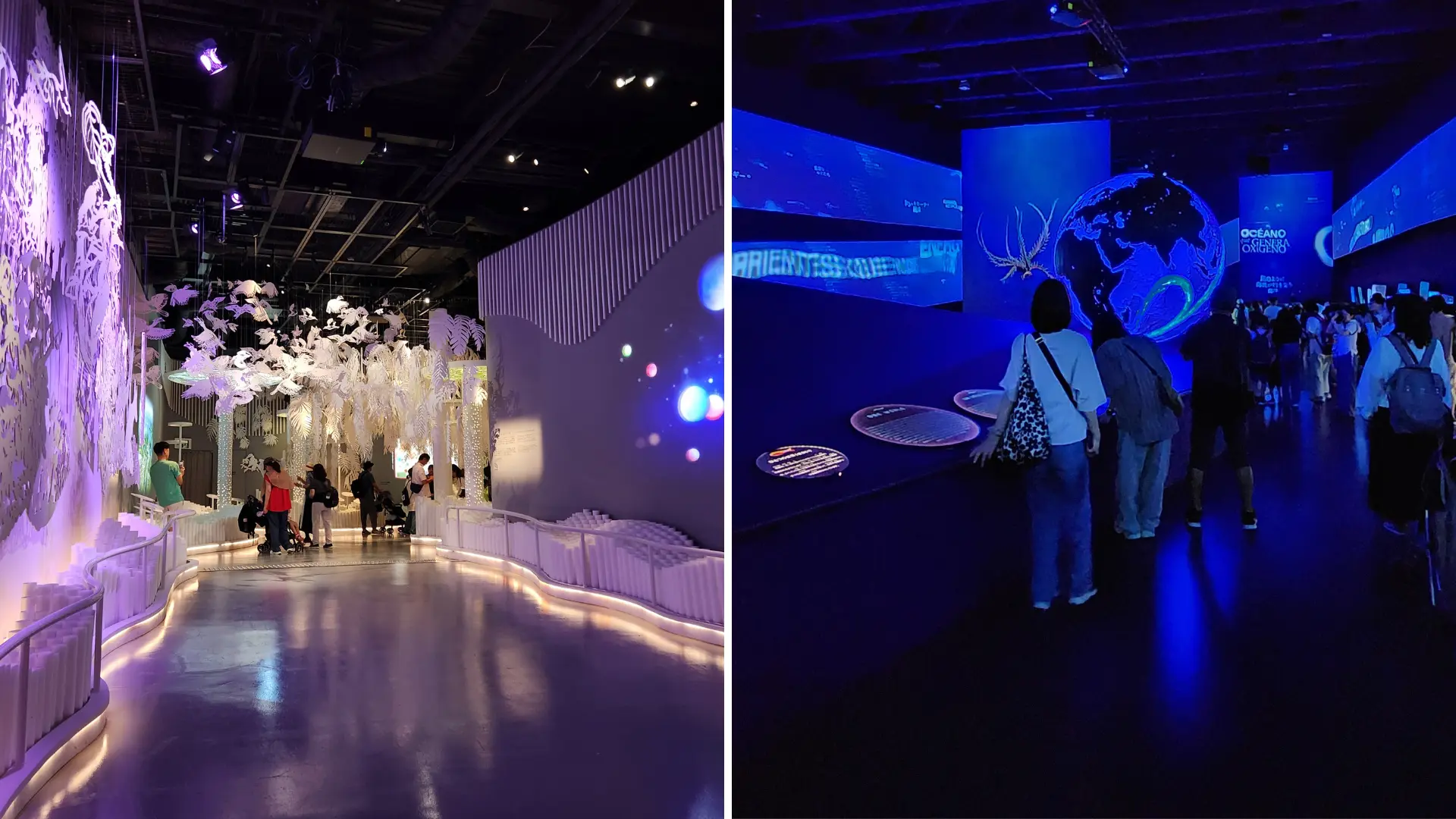
Silver Award: Singapore Pavilion (“Where Dreams Take Shape”)
Organizer: Singapore Tourism Board
Design: KR+D Pte Ltd., DP Architects, Presplay, Milla & Partner
Fabrication: Kingsmen Exhibits Pte Ltd.
Judges loved how Singapore wove its concept throughout the entire experience, from the pavilion’s captivating exterior to its interactive experiences inside. Based on the power of dreams, the theme invited and inspired aspiration, providing the kind of soulful experience that Singaporean pavilions have become known for.
Bronze Award: Spain Pavilion (“The Kuroshio Current”)
Organizer: Sociedad Mercantil Estatal de Acción Cultural S.A.
Design: Extudio, Enorme Estudio, Smart and Green Design
Fabrication: Murakami General Construction Co.
Judges appreciated how the theme, concept, journey, and architecture were beautifully intertwined, noting the creativity of revisiting a historical, maritime connection based on an ocean current. The beautifully designed experience presented a shared history in a thoroughly modern manner that made the past both tangible and transfixing.

Best Tech Integration
Gold Award: Canada Pavilion (AR Experience)
Organizer: Canada Expo 2025
Design: Mirari, Rayside Labossière, Guillaume Pelletier Architecte, So & Co., The Fury, Soleil Launière, Robert Lepage, Steve Blanchet
Fabrication: ES Global
The Canada Pavilion captured Gold for Best Tech Integration with an approach that reimagined how technology can amplify, rather than eclipse, human storytelling. Its signature augmented reality (AR) experience transformed the space into a living, layered narrative — a digital ecosystem interwoven with the physical world.
Visitors explored glacial-inspired installations that existed in two dimensions at once: the tangible and the virtual. With a simple scan of a provided mobile device, hidden stories emerged — data, art, and memory revealed through digital overlays. A serene forest canopy shifted into a dynamic visualization of Canada’s carbon capture initiatives, while indigenous artworks came alive to share ancestral connections to the land. Each moment invited guests to see beyond what was visible, deepening their emotional engagement through discovery.
What set the pavilion apart was not its technology, but its restraint. The design’s intuitive interface and seamless analog-digital balance placed empathy at the forefront, ensuring the tech served the story, not the other way around. Judges commended this approach as “technology in service of empathy,” praising how innovation was harnessed to foster understanding rather than spectacle.
By merging inclusivity with innovation, the Canada Pavilion offered a glimpse into the future of experiential design — one where digital tools become conduits for connection, transforming cold code into human warmth. Additionally, it broke the mold of AR and VR experiences that follow a linear storytelling art, instead offering an organic journey that adapted to guests’ interests and engagement levels. Collectively, the pavilion proved the next generation of storytelling isn’t about what technology can do, but what it can help us feel.

Silver Award: Serbia Pavilion (Nation’s Testimony)
Organizer: Beyond Limits
Design: Aleatek Studio, Muse Design, Galerija 12 Future Media Studio
Fabrication: GL Events, Galerija 12 Future Media Studio
By blending tech with motion and emotion, Serbia impressed judges with an inventive and memorable activation that all started with the drop of a glass marble. The resulting effect created surprising and immersive experiences, representing a seamless fusion of technological solutions and exhibition content. By infusing play into the pavilion’s very architecture, the Serbia Pavilion gave guests a glimpse into the theme of Belgrade’s own upcoming world expo in 2027.
Bronze Award: USA Pavilion (Multisensory Design)
Organizer: U.S. Department of State
Design: BRC Imagination Arts, Trahan Architects, Alchemy International, Tripod Studio, Meinhardt/E&M Consulting Engineers, Momentum Structural Engineers, Studio Loutsis, Hood Design, Dot Dash, DPA Lighting Consultants, NYX Design, Fractal Pictures, Yessian Music, Ricca Design Studios
Fabrication: ES Global, Alchemy International, BeWunder, True Staging
Judges lauded the series of both time-honored and technological solutions applied across different spaces inside the USA Pavilion that effectively ushered attendees to the moon and back. The symphony of sensorial cues created a sense of resonance and offered a comprehensive, immersive experience that was literally out of this world.

Best Exhibit or Display
Gold Award: Nordic Circle Pavilion (“Whirl”)
Organizer: Business Sweden, Business Finland, Danish Business Authority, Business Iceland, Innovation Norway, The Nordic Council of Ministers
Design: AMDL Circle
Fabrication: Rimond Group
There is an often-overlooked elegance in simplicity, and an understated appreciation of focus. Thankfully, judges observed and appreciated both of those attributes as they applied to the striking yet simple exhibit nestled within the Nordic Circle Pavilion at Expo 2025 in Osaka.
Earning the Gold Award for Best Exhibit or Display, the pavilion’s immersive installation, “Whirl,” showcased the collective innovation and cultural richness of Denmark, Finland, Iceland, Norway, and Sweden. The installation’s core message emphasized collaboration — turning isolated ideas into grand innovations and inviting the global community to engage in shared solutions for today’s complex societal challenges.
“Whirl” captivated visitors through its stunning physical and sensory design. White, translucent rice paper panels were suspended in a swirling formation reaching over six meters high, evoking the motion of a whirlpool. Dynamic projections on these panels depicted the daily lives of Scandinavian people, immersing guests in vibrant visual storytelling.
Complementing the vortex were three black, rock-like formations embedded with interactive sensors. Each formation featured a themed display — Lifestyle & Wellbeing, Mobility & Connectivity, and Green Transition & Circular Economy — which triggered video content when approached. These panels presented fascinating facts about the Nordic region in an engaging, accessible format suitable for all ages. By merging tactile interaction, audiovisual media, and environmental design, the exhibit encouraged curiosity and participation, reinforcing the Nordic ethos of collective innovation.
Judges praised “Whirl” for its innovative integration of materials, storytelling, and interactivity, noting its ability to make complex societal themes engaging and approachable. In Osaka, the Nordic Circle Pavilion demonstrated that experiential design can not only educate but also inspire visitors to think collaboratively, leaving a lasting impression of the Nordic region’s creativity, sustainability, and commitment to progress.
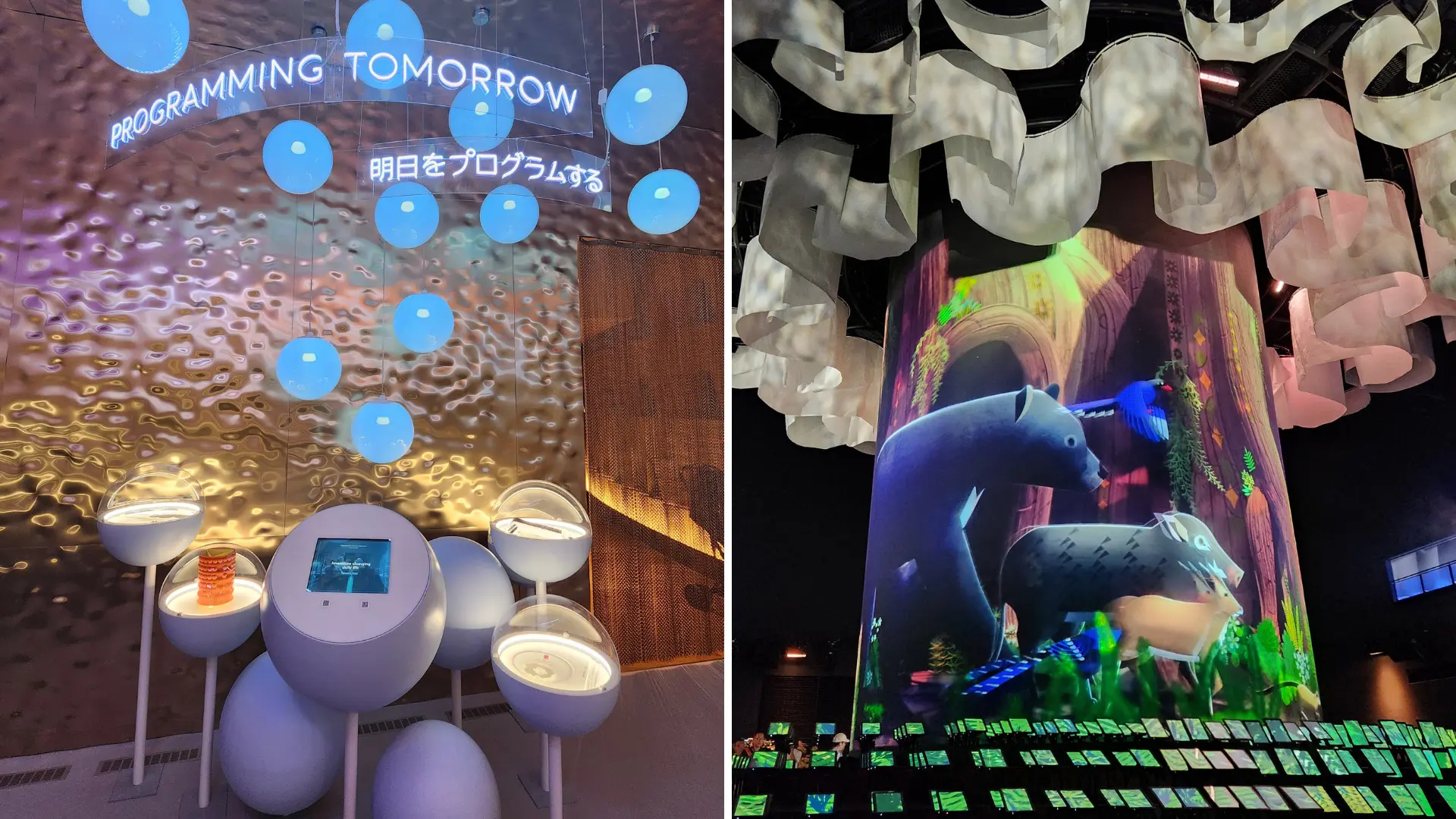
Silver Award: Poland Pavilion (Plantation of Ideas)
Organizer: Polish Investment and Trade Agency
Design: Interplay Architects, Komy Studio, GDBY, Kafti, Wiesław Bartkowski
Fabrication: Finasi SPI JV Turnkey Projects Contracting (FZCO), Nagashima Co., JSC Corp.
Highlighting Polish ideas and innovations shaping a sustainable future, the Plantation of Ideas impressed judges, one of whom noted that comparable spaces are often undesigned and disjointed. But Poland took a different approach, creating a space that fostered immersion and invited exploration.
Bronze Award: Tech World Pavilion (Life Theater)
Organizer: Tamayama Digital Tech Co., Ltd.
Design: MAYU Architects, Azusa Sekkei Co.
Fabrication: Taiwan Kumagai Co., Kumagai Gumi Co. Kansai Branch
Comprising a towering sacred tree, virtual endemic butterflies, and an array of synchronized tablet PCs, the Life Theater exhibit mesmerized judges by simulating swaying blossoms, jumping fish, and the beauty of biodiversity. The exhibit set the scene for an immersive high-tech quest into a future that isn’t far away.
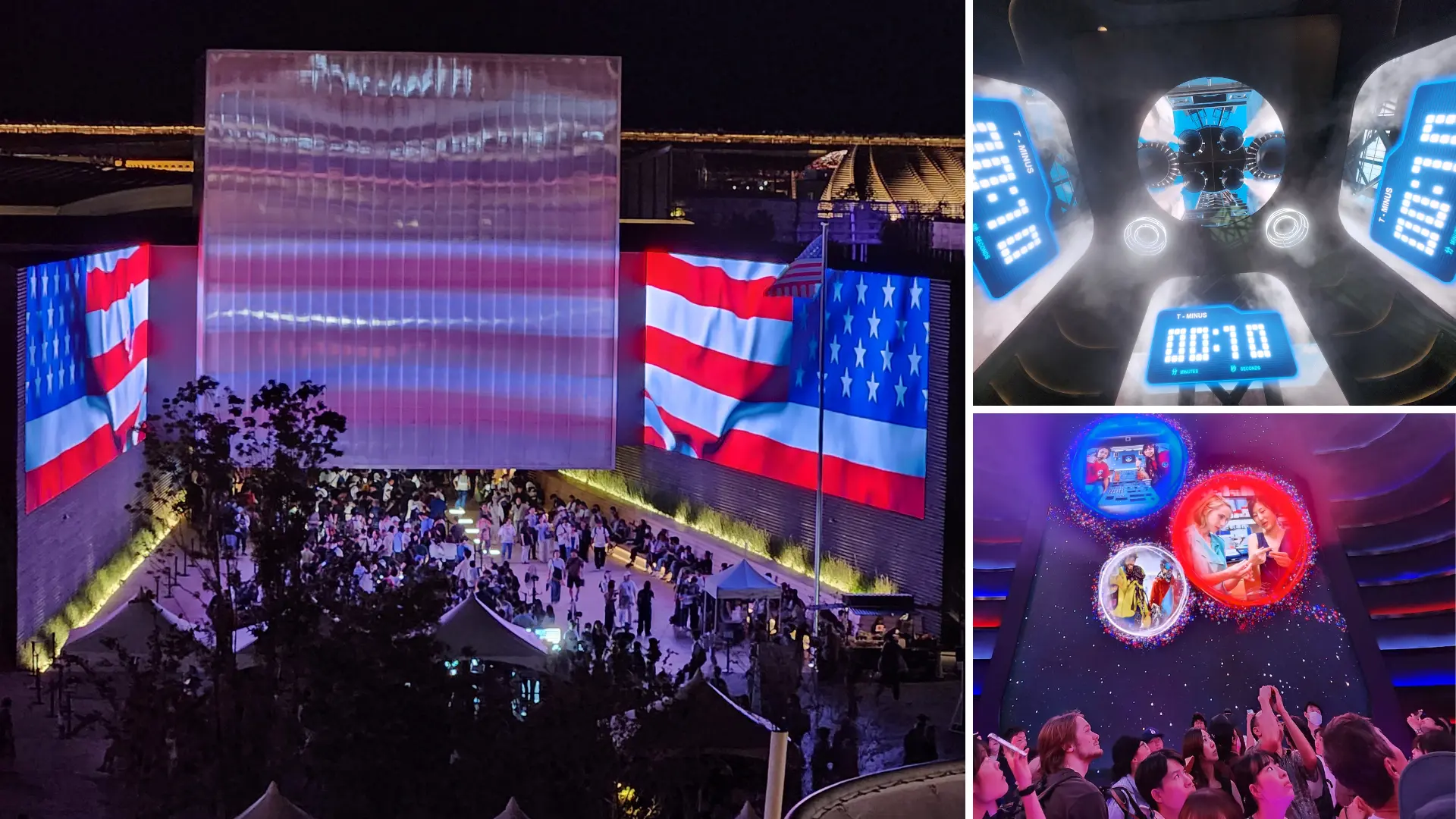
Best Presentation
Gold Award: USA Pavilion (“Launch”)
Organizer: U.S. Department of State
Design: BRC Imagination Arts, Trahan Architects, Alchemy International, Tripod Studio, Meinhardt/E&M Consulting Engineers, Momentum Structural Engineers, Studio Loutsis, Hood Design, Dot Dash, DPA Lighting Consultants, NYX Design, Fractal Pictures, Yessian Music, Ricca Design Studios
Fabrication: ES Global, Alchemy International, BeWunder, True Staging
At Expo 2025 Osaka, the USA Pavilion earned the Gold Award for Best Presentation for its breathtaking immersive experience, “Launch,” which transformed storytelling into a fully multisensory journey. Rather than relying on individual technological feats, the pavilion demonstrated how innovation is most powerful when in service of narrative. At its core, “Launch” celebrated the American spirit of creativity, curiosity, and imagination, inviting visitors to experience the thrill of exploration through sight, sound, touch, and even smell.
Upon entering, guests were immediately immersed in a towering media environment that simulated the experience of a NASA rocket launch. Three massive nine-meter LED screens filled the visual field, complemented by an overhead circular LED display, creating a fully enveloping 3D environment. As the countdown reached zero, the room shook with deep sub-acoustic rumbles from the floor while overhead rocket nozzles fired, giving visitors the visceral sensation of lift-off. Pixelized arcs of light extended the three-dimensional experience, while speakers embedded behind fabric walls delivered a 360-degree audio field, enveloping the audience in the musically driven narrative. Every technical element was orchestrated with precision. A sophisticated show control system synchronized six SMPTE timecode streams, ensuring that lights, sound, visuals, and special effects operated seamlessly.
Judges praised “Launch” for its masterful integration of storytelling and technology, noting that it transformed a national presentation into a deeply emotional journey. By combining immersive media, physical sensations, and precise technical execution, the USA Pavilion created a space where visitors didn’t just witness innovation — they felt it. “Launch” demonstrated the power of experiential design to inspire wonder, leaving attendees with a profound connection to the story of human curiosity and American ingenuity. It was patriotic without being parochial — inspiring, inclusive, and deeply human.
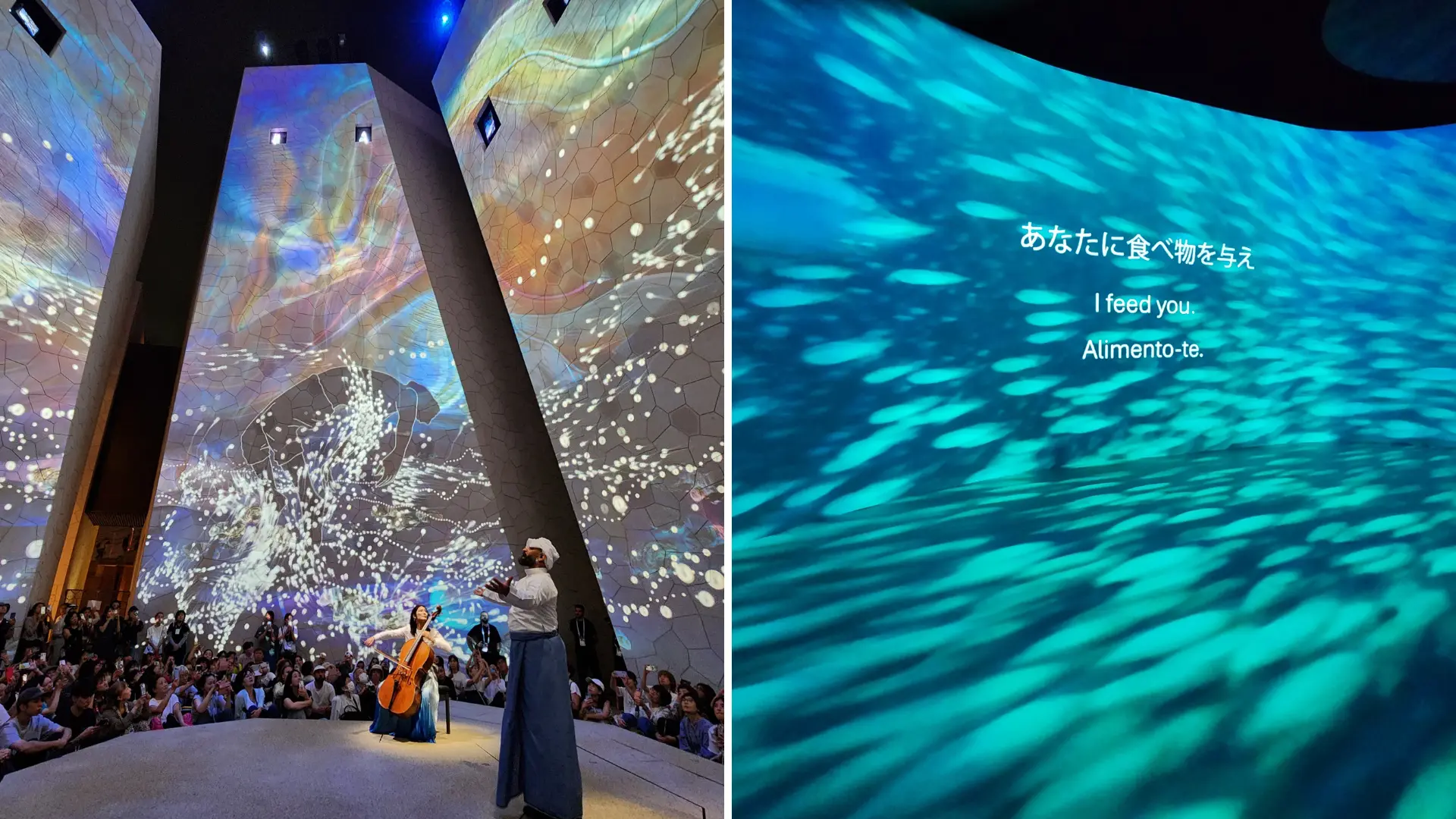
Silver Award: Saudi Arabia Pavilion (Tales of Water)
Organizer: Insignia Worldwide, Done & Dusted, THA, Beyond Limits, TGP International
Design: Foster + Partners, Black Engineering, Squint Opera, 59 Productions
Fabrication: Ando Hazama, Tanseisha Co., BeWunder, Tait
Judges called “Tales of Water” a resonant connection of architecture, landscape, sound, and color that created an exceptional visitor experience. They also loved the incorporation of traditional performances with high-tech multimedia. Held outdoors in the “Saudi Courtyard,” the evocative presentation was pure Arabian alchemy in action.
Bronze Award: Portugal Pavilion (The Ocean’s Point of View)
Organizer: AICEP – Portugal National Investment Agency
Design: Kengo Kuma & Associates
Fabrication: Rimond Group
Judges noted how Portugal’s engaging and immersive presentation sent a serious and impactful message without overwhelming the visitor. Seemingly narrated by the ocean itself, the stunning film is a plea for a more environmental ethos. In the words of one judge, “It sent an essential message in an urgent yet deeply personal and easily consumable way.”
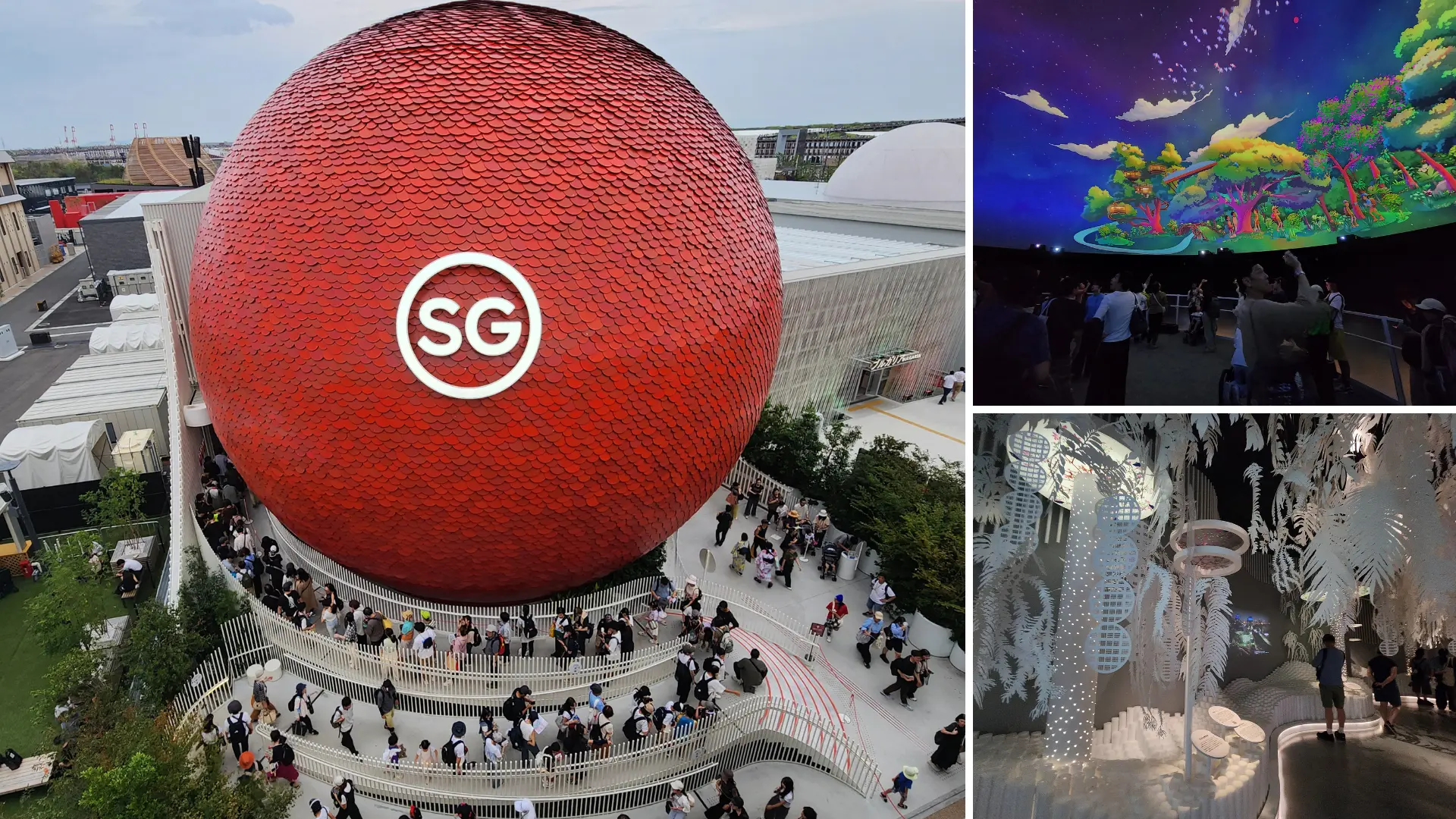
Best Activation or Engagement
Gold Award: Singapore Pavilion (“Dream Repository”)
Organizer: Singapore Tourism Board
Design: KR+D Pte Ltd., DP Architects, Presplay, Milla & Partner
Fabrication: Kingsmen Exhibits Pte Ltd.
Singapore’s “Dream Repository” earned Gold for Best Activation or Engagement by transforming visitors into active participants in a shared global vision. Situated within the Dream Sphere, the pavilion invited guests to record personal dreams — from aspirations and hopes to nighttime visions — which were then translated into generative art projected onto a dynamic digital mural. This continuously evolving installation became a visual testament to collective imagination, reflecting dreams from around the world in real time.
The experience was designed to be both intimate and communal, embodying Singapore’s theme, “Where Dreams Take Shape.” Visitors were not passive observers; they became essential contributors to the narrative, co-creating an ever-changing work of art. The pavilion’s participatory approach fostered a sense of connection across cultures, offering a space where individual imagination merged with the aspirations of a global community. Judges praised the activation for its emotional accessibility and technical sophistication, noting that it allowed every guest to feel integral to the story.
The immersive journey began with the evocative sound installation, Whispers in the Void, setting the stage for reflection and creativity. Guests then engaged with the Dream Repository, submitting their personal dreams before ascending into a 360-degree dome. Here, their contributions converged with others, creating a breathtaking finale that celebrated shared aspirations while inspiring bold visions for the future.
Judges praised the activation’s emotional accessibility and technical sophistication, as well as the immersive environments that punctuated attendees’ journey throughout the multi-tiered activation. “It’s one of the few engagements that makes every visitor feel like an essential part of the story,” one juror noted. “It’s not about Singapore’s dreams — it’s about ours.”
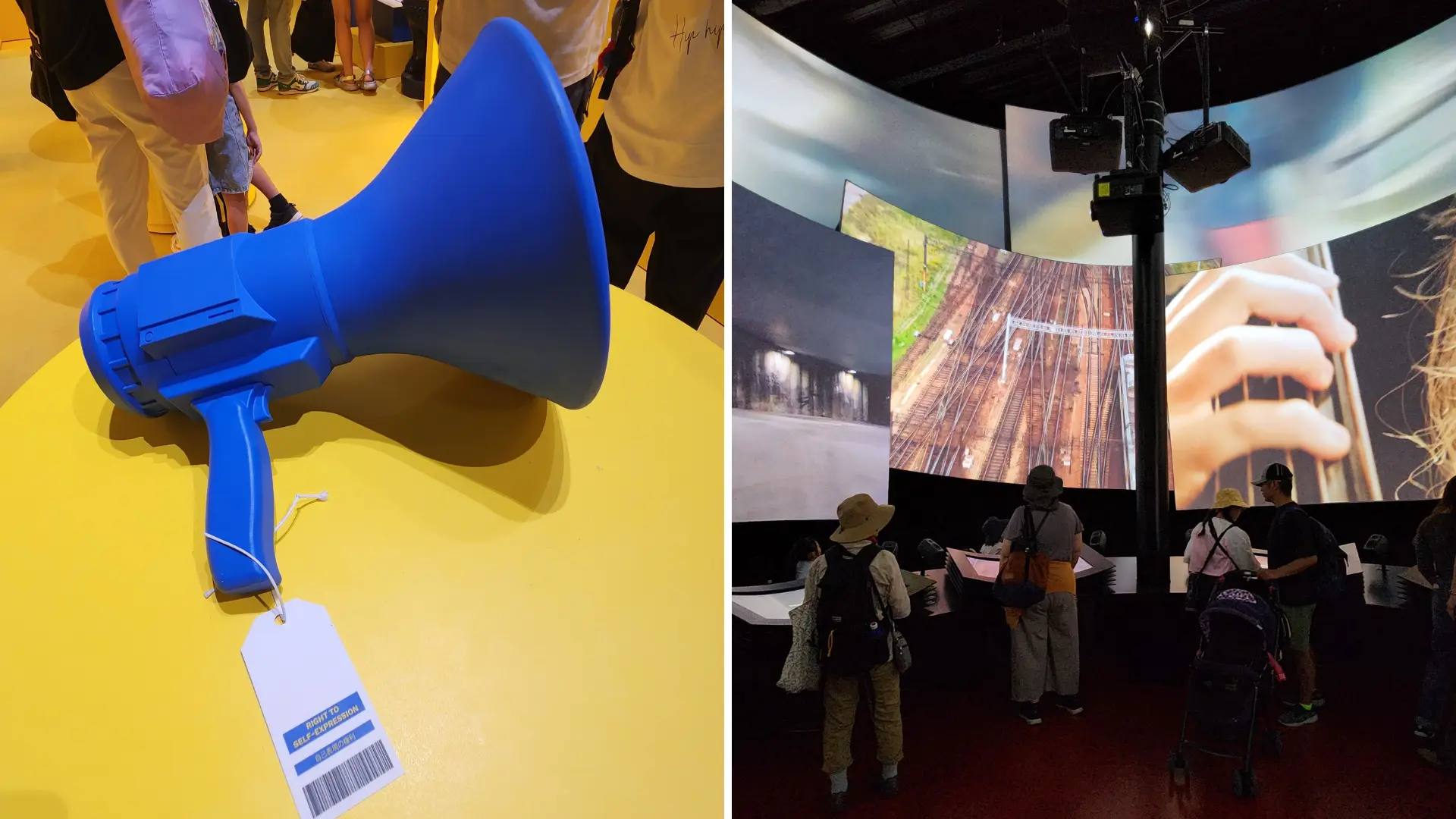
Silver Award: Ukraine Pavilion (Not for Sale)
Organizer: Government of Ukraine
Design: Bickerstaff.734
Fabrication: Bickerstaff.734, Pole, Caparol
The activation inside Ukraine’s Pavilion allowed guests to scan price tags on various objects, revealing raw, powerful content instead of purchase prices. In the words of one judge, “The Ukraine Pavilion rendered me speechless and contemplative. It reminded me of the power of experiential design.” Another added that the experience was extremely effective at making an impossible topic both accessible and impactful.
Bronze Award: Austria Pavilion (Composing the Future)
Organizer: Austria Expo 2025
Design: BMW Designers & Architects, facts and fiction
Fabrication: Shinohara Shoten
Judges praised the Austria Pavilion’s activation for engaging visitors through music and movement, calling it a very effective, multisensory experience that blends tradition with innovation. But perhaps more importantly, the activation reminded guests that their actions can literally orchestrate our future.
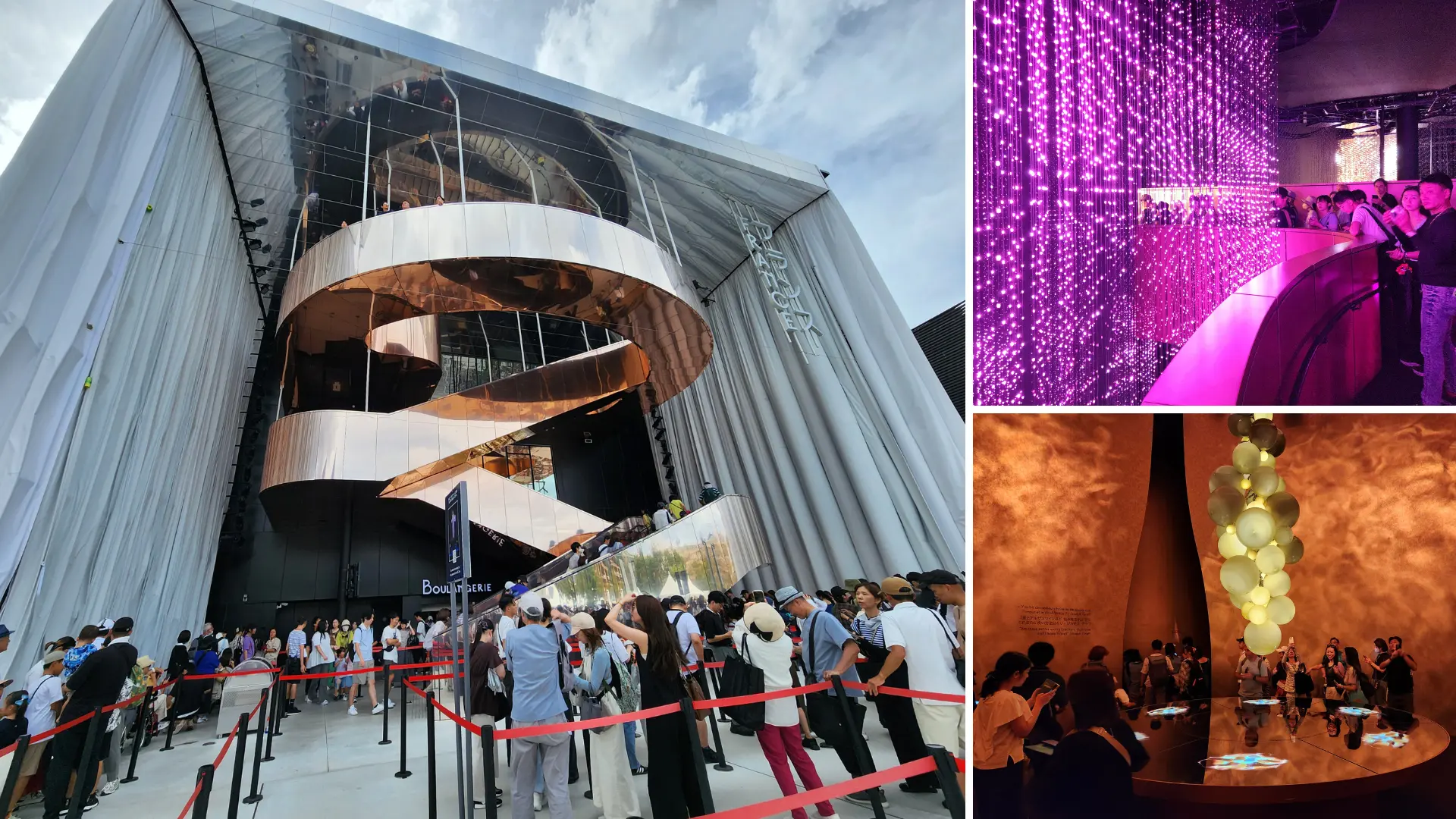
Best Element or Detail
Gold Award: France Pavilion (Lighting Design)
Organizer: COFREX
Design: Coldefy, CRA-Carlo Ratti Associati
Fabrication: Rimond Group
The France Pavilion earned Gold in the category of Best Element or Detail for its masterful use of lighting design, transforming both natural and artificial light into a central storytelling element. Judges were impressed by the pavilion’s ability to use light not merely as illumination, but as a dynamic tool that shaped visitor perception, guided exploration, and elevated the overall experience.
Natural light played a starring role throughout the pavilion. Reflective surfaces and gleaming metallic finishes amplified sunlight, while secret gardens tucked within the pavilion were illuminated in ways that highlighted texture, color, and form, creating moments of discovery and delight for visitors as they moved through the space.
High-tech lighting installations further enhanced the pavilion’s immersive quality. Synchronized effects turned rooms into living canvases where light guided attention, set mood, and created rhythm. These dynamic cues made each space feel alive, while complementing the pavilion’s broader narrative and cultural storytelling.
Judges praised the France Pavilion for its precision, artistry, and conceptual clarity, noting that the lighting design did more than decorate — it enhanced engagement, emphasized detail, and deepened emotional resonance. The integration of technology with architectural and landscape elements demonstrated a sophisticated understanding of how light can influence perception and experience.
By weaving together natural illumination and advanced lighting systems, the France Pavilion created a layered sensory environment that drew visitors in and invited exploration. Its approach set a high benchmark for the creative and purposeful use of light in exhibition design. At Expo 2025, the pavilion proved that thoughtful lighting can be a narrative device, an emotional amplifier, and a work of art in its own right, earning its recognition as a Gold-winning element of design excellence.
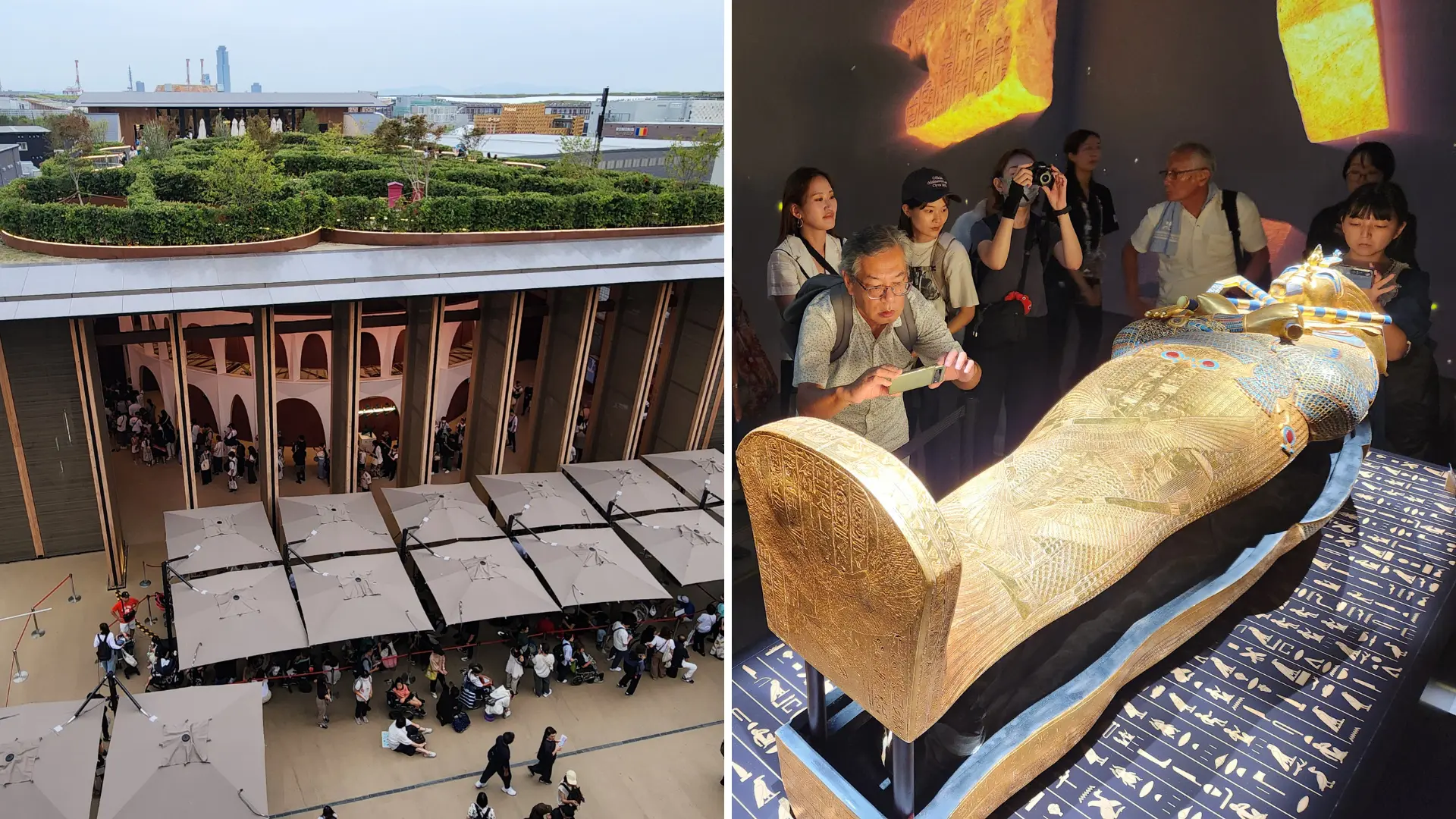
Silver Award: Italy Pavilion (Rooftop Garden)
Organizer: Ministry of Foreign Affairs and International Cooperation
Design: Mario Cucinella Architects
Fabrication: Nishio Rent All Co., Nomura Co.
Standing high above the Expo grounds, Italy’s rooftop garden was an oasis in Osaka, providing a unique perspective and delightfully natural respite. As they traversed the labyrinth-like pathway, guests could contemplate the art and innovations experienced inside the pavilion while enjoying incredible views of Expo 2025’s Grand Ring.
Bronze Award: Egypt Pavilion (360-Degree Projection)
Organizer: United Group
Design: United Group
Fabrication: United Group
Judges appreciated how the use of fully immersive projection transported Expo guests from Osaka to the land of the Pharaohs, noting how multimedia magic made the small, interior spaces feel impossibly expansive. “Space can be a hugely limiting parameter,” said one judge, “but Egypt turned walls into horizons.”
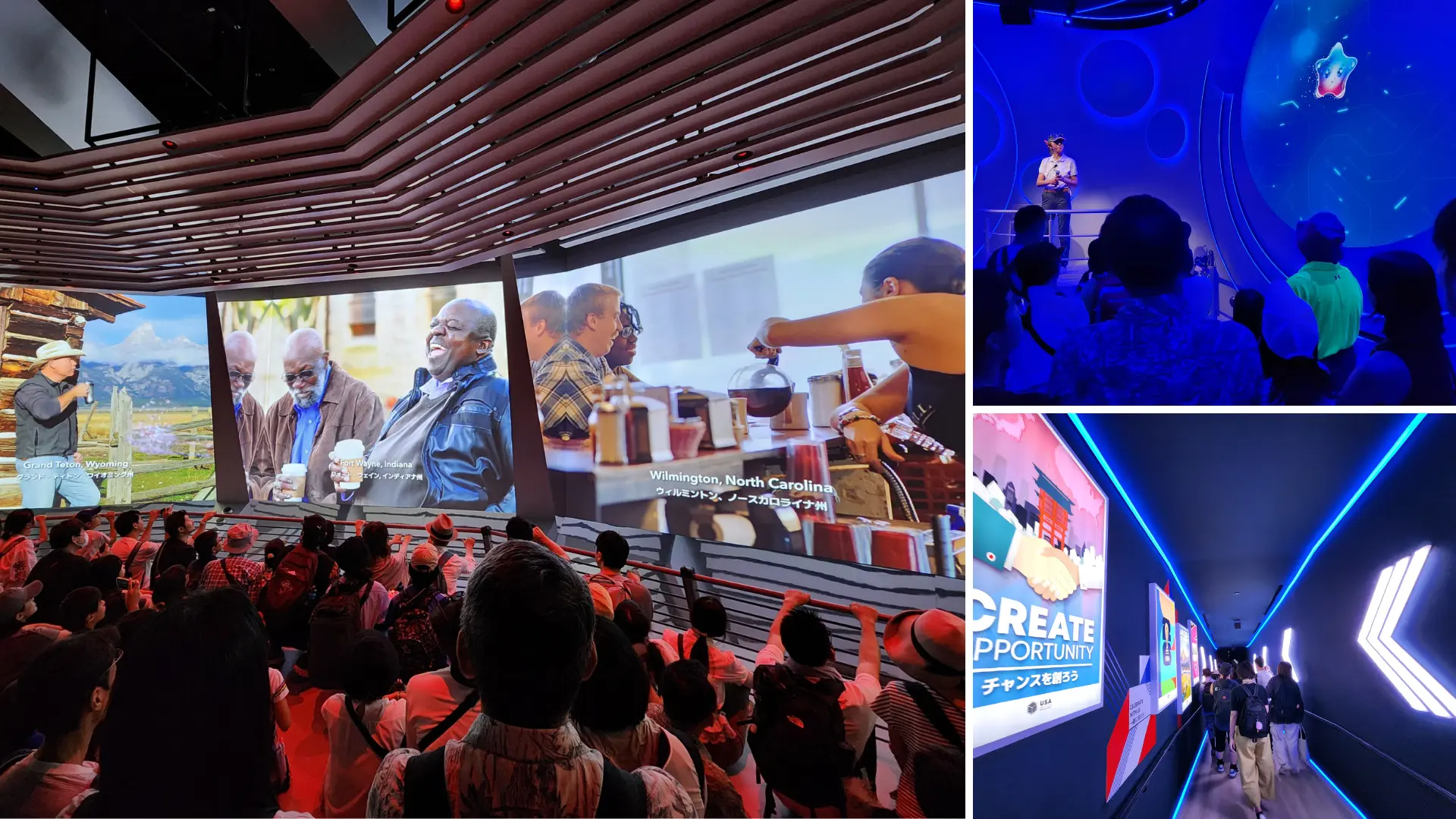
Best Pavilion Team
Gold Award: USA Pavilion
Organizer: U.S. Department of State
Design: BRC Imagination Arts, Trahan Architects, Alchemy International, Tripod Studio, Meinhardt/E&M Consulting Engineers, Momentum Structural Engineers, Studio Loutsis, Hood Design, Dot Dash, DPA Lighting Consultants, NYX Design, Fractal Pictures, Yessian Music, Ricca Design Studios
Fabrication: ES Global, Alchemy International, BeWunder, True Staging
In addition to winning Gold in the Best Presentation category, the USA Pavilion earned the Gold Award for Best Pavilion Team, a recognition of the exceptional dedication, skill, and warmth of the staff who brought the pavilion’s experiences to life. The pavilion’s team was central to delivering a seamless, engaging, and memorable journey for every visitor, ensuring that the story of American creativity, innovation, and cultural exchange was communicated with authenticity and enthusiasm.
A standout feature of the USA Pavilion team is its Youth Ambassadors, a vibrant group of over 80 young leaders representing 45 U.S. states and speaking more than 20 languages. Selected through a rigorous process and trained extensively in Fort Worth, Texas, these ambassadors underwent preparation in communication, presentation, and Japanese language skills to ensure they could engage meaningfully with a global audience. From the moment guests arrived, ambassadors fostered a welcoming and informed environment.
Support staff, including Venue Managers and Guest Services leaders, ensured that every operational detail ran smoothly. Special attention was given to visitor comfort during Osaka’s summer heat, with shaded waiting areas and assistance available for those needing rest or medical attention. Accessibility was prioritized, with clear signage, dedicated staff, and priority lanes for visitors using wheelchairs or requiring extra support.
Inside the pavilion, Youth Ambassadors engaged guests in dynamic, conversational experiences, particularly in the Innovation space, offering rare opportunities for direct cultural exchange. These interactions created genuine moments of discovery, dialogue, and connection, reinforcing the pavilion’s goal of fostering meaningful cross-cultural engagement.
Judges praised the USA Pavilion team for their professionalism, energy, and authenticity, highlighting how their coordinated efforts enhanced every aspect of the guest experience. From arrival to departure, the team’s warmth, attentiveness, and dedication ensured that every visitor left with a positive, lasting impression of the United States, making the pavilion’s onsite experience truly world-class.

Silver Award: Italy Pavilion
Organizer: Ministry of Foreign Affairs and International Cooperation
Design: Mario Cucinella Architects
Fabrication: Nishio Rent All Co., Nomura Co.
Embodying Italian ideals, the Italy Pavilion’s team understood that every smile, welcome, and small gesture contributed to guests’ perception of the country. Trained in every innovation and work of art on display, the staff enhanced the already exceptional experience with interesting facts, hidden details, and authentic Italian charm.
Bronze Award: Vietnam Pavilion
Organizer: Viet Nam Government, Pico International
Design: Viet Nam Government, Pico International
Fabrication: Pico International
Bringing this small pavilion to life was the on-site team that represented the spirit of Vietnam with professionalism, warmth, and sincerity. The pavilion’s “Star of the Week” program resonated with judges for recognizing kindness, pride, and hospitality. Meanwhile, live performances allowed the heart of the pavilion — its people — to shine.
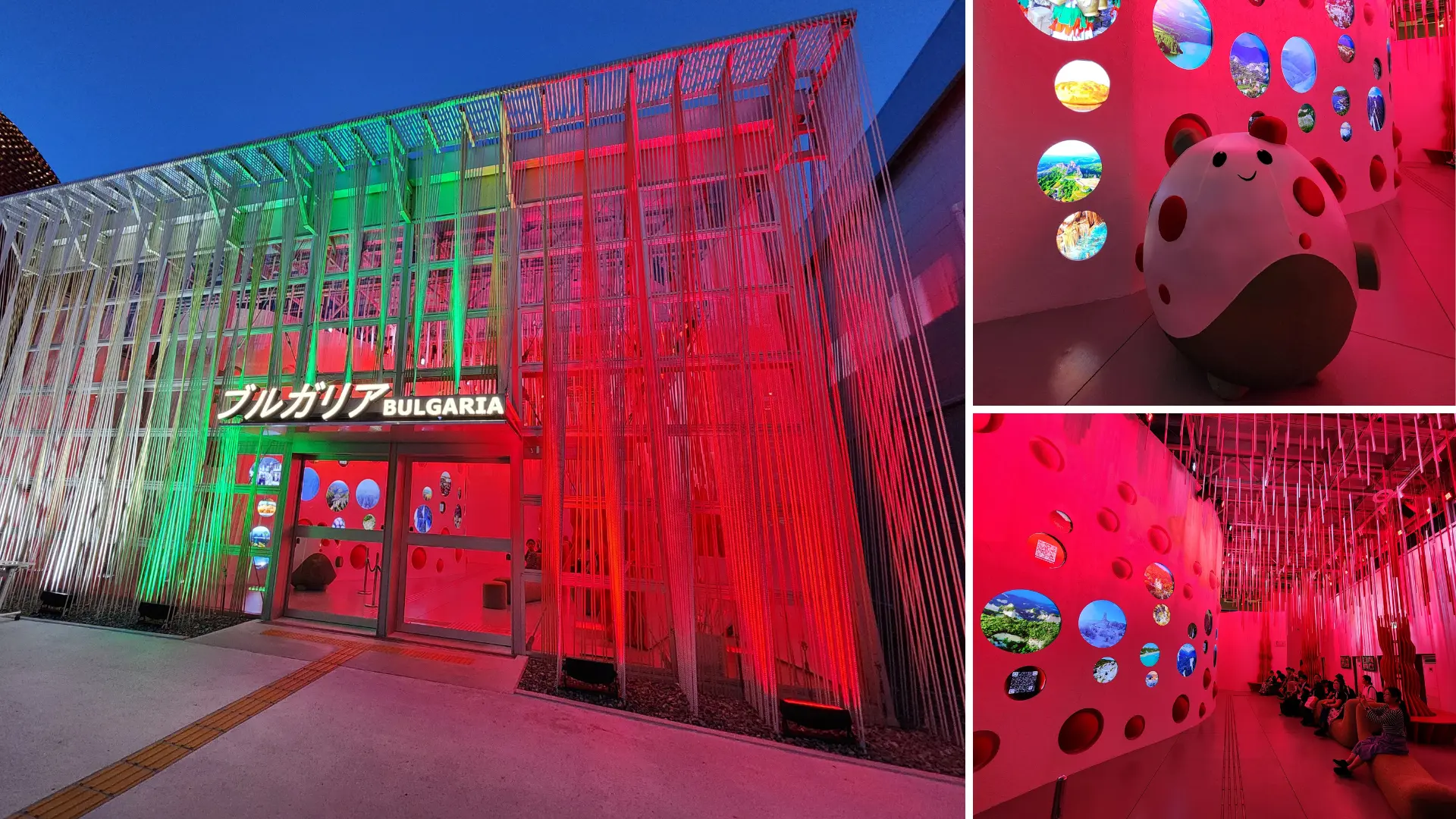
Best Pavilion Mascot
Gold Award: Bulgaria Pavilion (Lacto-chan)
Organizer: BESMEPA
Design: KMDW, MP Studio, Daiwa Lease Co., Scalator.Ltd
Fabrication: Daiwa Lease Co.
At Expo 2025 Osaka, the Bulgaria Pavilion earned the Gold Award for Best Pavilion Mascot for its delightful and engaging character, Lacto-chan. Inspired by Lactobacillus bulgaricus, the bacterium used in traditional Bulgarian yogurt, Lacto-chan embodies a unique combination of science, culture, and friendship, serving as both an educational and unifying presence throughout the pavilion.
Unlike typical superhero mascots, Lacto-chan’s charm lies in its emphasis on community and cooperation. The character became a bridge between cultures, symbolizing the longstanding connections and mutual curiosity between Bulgaria and Japan. Through playful interactions and approachable storytelling, Lacto-chan introduced visitors to the scientific and cultural significance of yogurt, while also highlighting Bulgaria’s contributions to nutrition, health, and innovation.
Lacto-chan was more than a character for entertainment; it was an ambassador for engagement, encouraging visitors of all ages to connect with the pavilion’s themes. Children and adults alike were drawn to the mascot’s cheerful demeanor, interactive appearances, and educational messaging, making complex ideas about microbiology and culture accessible and fun. The mascot also appeared across pavilion signage, digital installations, and interactive activities, creating a cohesive visual identity that strengthened the overall visitor experience.
Judges praised Lacto-chan for its originality, cultural relevance, and ability to foster emotional connections, noting that the mascot enhanced the pavilion’s storytelling while creating memorable moments for attendees. By combining scientific inspiration with a warm, approachable personality, Lacto-chan succeeded in turning abstract concepts into tangible experiences, delighting audiences and promoting Bulgaria’s values of curiosity, collaboration, and inclusivity.
In Osaka, Lacto-chan demonstrated the power of mascots to do more than entertain — it created connections, inspired curiosity, and left a lasting impression, making it a well-deserved Gold Award winner for Best Pavilion Mascot.
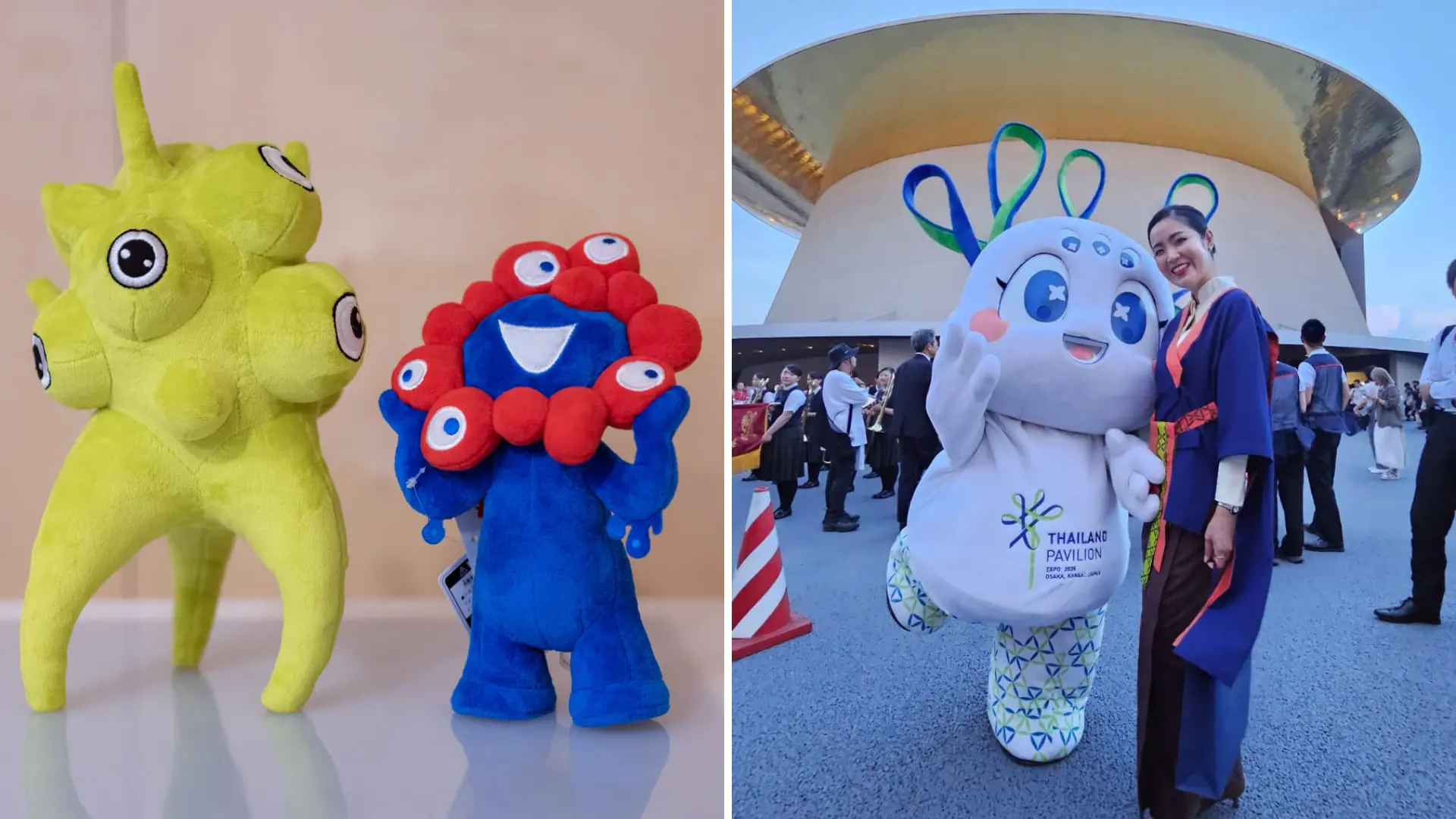
Silver Award: Czech Pavilion (René)
Organizer: Czech Centres
Design: Studio Apropos Architects
Fabrication: Daisue Construction, A2Timber, Wieden
The form and namesake of the Czech Pavilion’s mascot was celebrated Czech glass artist René Roubíček. Judges called the exponaut-inspired character “a unique and engaging creation that conveys meaningful messages about collaboration,” while also noting his expressive charm and connection to Osaka’s 1970 World Expo.
Bronze Award: Thailand Pavilion (Bhumi-Jai)
Organizer: The Ministry of Public Health
Design: Architects 49, Keikan Sekkai Tokyo LTd., Rightman, TK Studio Co.
Fabrication: RMA110, A-Forum, AE49, ME49
Judges noted the metaphorical meaning, expressive personality, and playful spirit of Bhumi-Jai. In the words of one judge, “Bhumi-Jai is a strong representation of history, culture, national identity, and Thai public health standards.” Another praised how the character appealed to children, in particular, inspiring healthy habits.
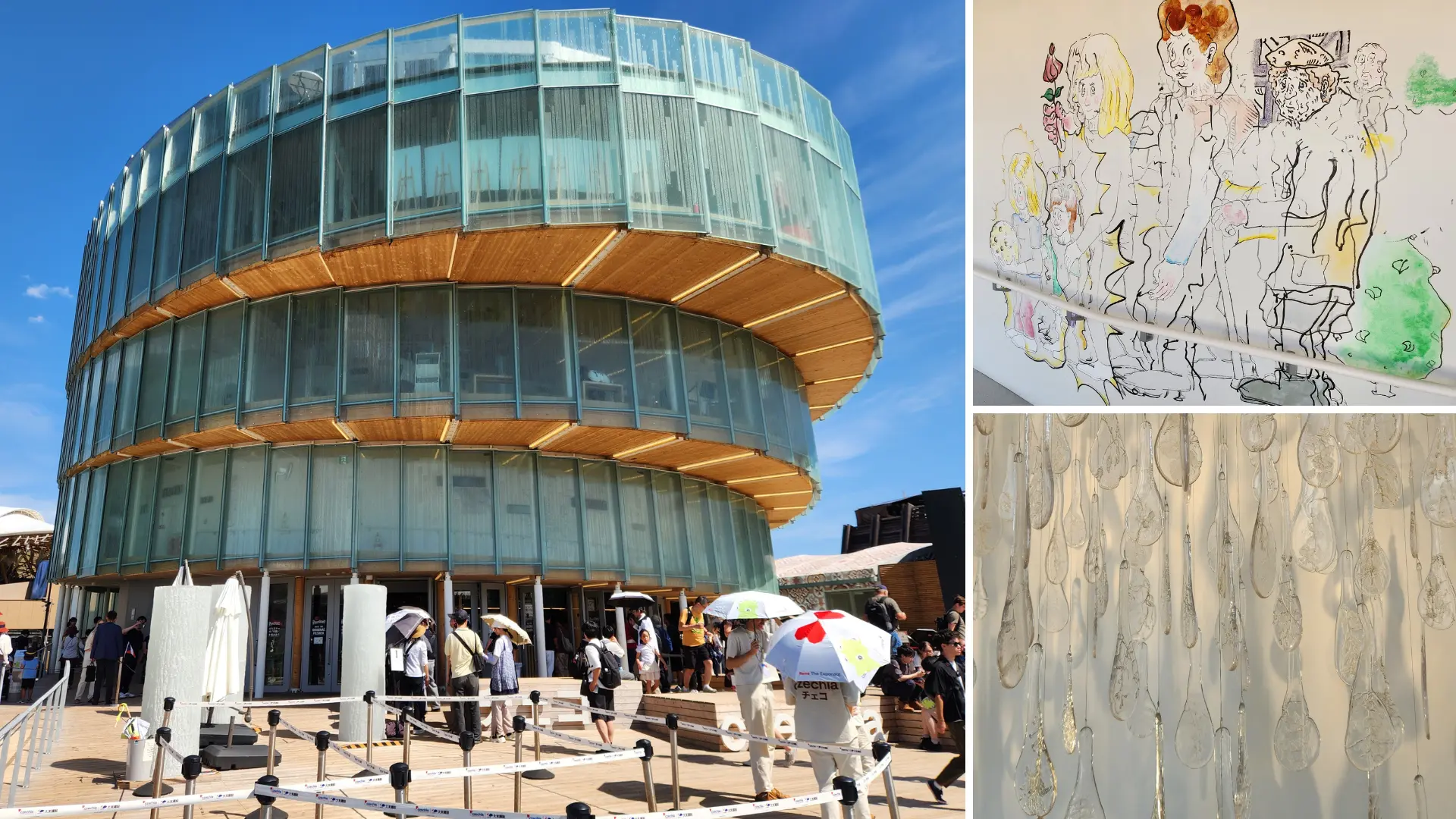
People’s Choice Award
Gold Award: Czech Pavilion
Organizer: Czech Centres
Design: Studio Apropos Architects
Fabrication: Daisue Construction, A2Timber, Wieden
The Czech Pavilion captured the Gold Award in the People’s Choice category, earning public recognition for its engaging, emotionally resonant experience. Voted on by visitors and fans alike through The Experiential Design Authority website, the pavilion received 13% of the more than 5,000 votes cast over a 10-day period, reflecting its broad appeal and strong connection with audiences.
The pavilion’s theme, “Talent and Creativity for Life,” showcased the Czech Republic’s unique ability to blend tradition and innovation. Utilizing sound art, robotics, and exemplary craftsmanship, the pavilion invited visitors to experience how technology and heritage can intersect to solve modern challenges. Its subtle yet emotionally resonant design connected deeply with guests through memorable exhibitions, incredible concerts, and a rooftop bar and restaurant with pristine views of the nightly Expo 2025 light shows, “Under the Midnight Rainbow” and “One World, One Planet.”
Judges and visitors alike praised the pavilion for its subtlety, authenticity, and beauty. The Czech team emphasized thoughtful curation, storytelling, and experiential depth, allowing each visitor to form a personal connection with the content while simultaneously conveying meaningful narratives about Czech innovation, sustainability, and craftsmanship.
Winning the People’s Choice Award underscored the pavilion’s success in capturing public imagination. By resonating with a diverse audience — from experiential design professionals to casual Expo attendees — the Czech Pavilion demonstrated the power of accessible, thoughtful, and beautifully executed design to inspire and delight.
In Osaka, the Czech Pavilion proved that experiential design is not only about what you show, but how it makes people feel. Its Gold-winning status as the People’s Choice winner is a testament to the team’s ability to create an experience that is memorable, meaningful, and universally engaging, leaving a lasting impression on all who visited.

Silver Award: The Baltics Pavilion
Organizer: Investment and Development Agency of Latvia, Mission Latvia, Government Office of the Republic of Lithuania, Lithuania Co-create
Design: Kettler, Association of Persons
Fabrication: Kettler, Association of Persons
This small pavilion made a big impact on voters, as The Baltics Pavilion captured roughly 9 percent of the more than 5,000 votes cast. The pavilion’s sophisticated minimalism was balanced by an equal dose of endearing whimsicality. A unique, interactive condensation wall and playful mushroom-inspired mascot, Barabi-chan, were among the pavilion’s most popular elements.
Bronze Award: Malta Pavilion
Organizer: Malta Enterprise
Design: EM Architects, Wevr
Fabrication: Bluedot, GL Events
Just eight votes separated third and fourth place, but it was Malta’s remarkable pavilion and multimedia façade that won the Bronze Award in the People’s Choice category, earning nearly 7 percent of the total votes. The pavilion’s effective use of both interior and exterior curved LED screens played a key role in its magnetism and popularity.
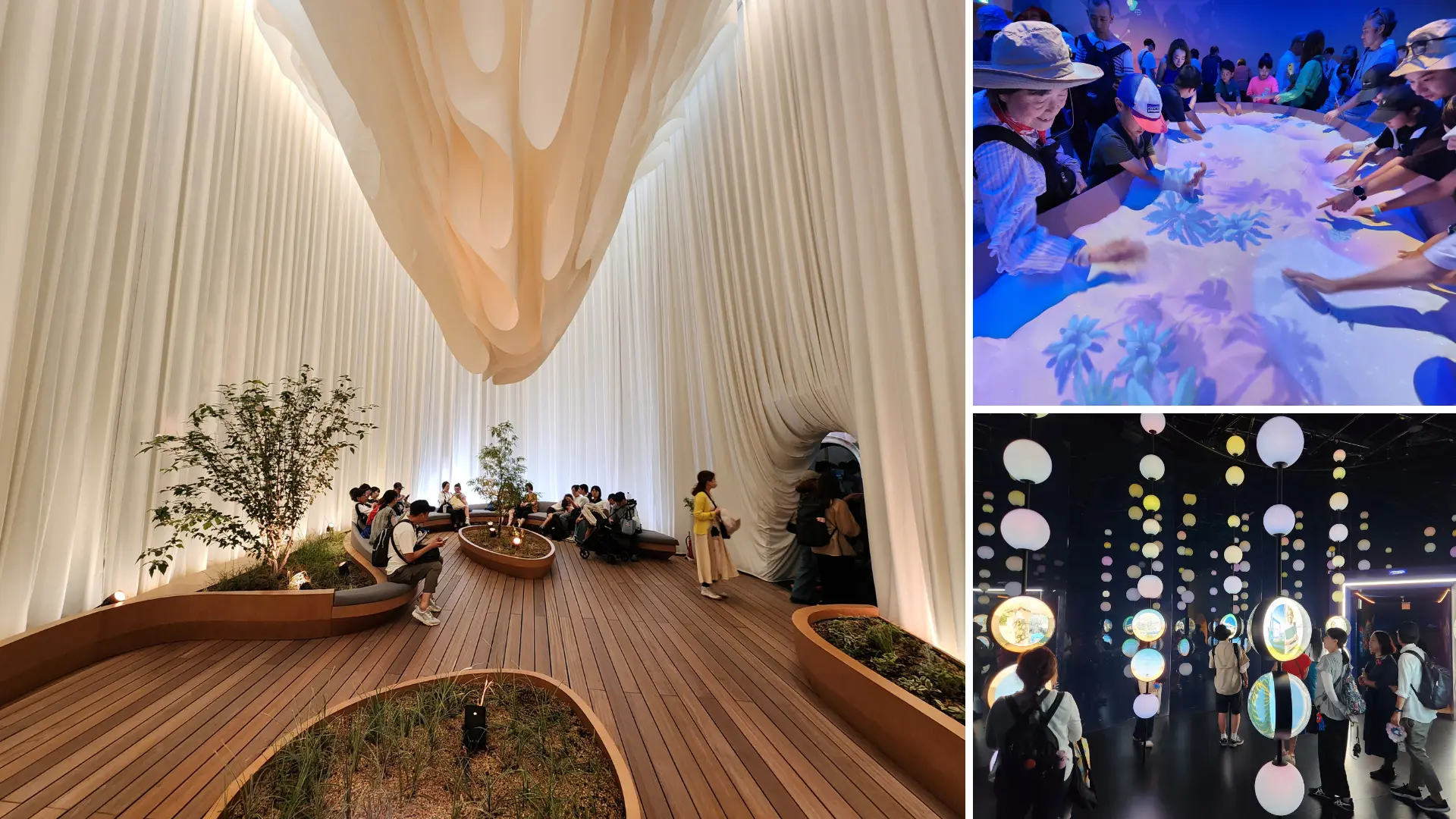
Director’s Choice Award
Gold Award: Kuwait Pavilion
Organizer: State of Kuwait, Ministry of Information
Design: LAVA, Insglück Gesellschaft für Markeninszenierung
Fabrication: Nussli Group
The Kuwait Pavilion earned the Gold Award in the Director’s Choice category, hand-selected by the Executive Director of The Experiential Design Authority (TEDA) for its poetic and immersive interpretation of the desert as a symbol of endurance and potential.
Under the theme “Visionary Lighthouse,” the pavilion creates a bridge between tradition and innovation, embodying Kuwait’s national theme of Empowering People within the Expo’s Empowering Lives sector. Guests arrive beneath a sweeping, wing-shaped roof inspired by the dunes, waves, and wings of a falcon. Hovering above a sculpted plinth, the canopy evokes Kuwait’s geography while symbolizing openness, generosity, and upward vision. Sustainability and accessibility were integral to the pavilion’s design, with modular construction and passive cooling systems reflecting Kuwait’s commitment to environmentally responsible architecture.
The visitor journey unfolds across five immersive chapters. The outdoor plaza celebrates Kuwait-Japan friendship and the country’s Expo legacy. Pearl of Perception transports guests into an underwater realm through a 4D ride exploring Kuwait’s past and future. Dawn in the Desert evokes a desert night with sand, interactive exhibits, and sculptural ceiling sails, showcasing ancient knowledge from Al-Sadu weaving to maritime trade and oil. In People & Culture, visitors engage with VR and digital storytelling to experience Kuwait’s present, including Vision 2035 projects, women’s roles, and inclusive social initiatives. And the Oasis provides moments of reflection amidst native plantings.
The experience culminates in the Visionary Lighthouse Dome, where visitors’ spoken wishes are transformed into AI-controlled shooting stars that link to others in a shared cinematic night sky. TEDA’s Executive Director, Travis Stanton, praised the Kuwait Pavilion for its innovative, emotionally resonant storytelling, and thoughtful design, recognizing it as an exemplar of architecture, narrative, and immersive engagement at Expo 2025.
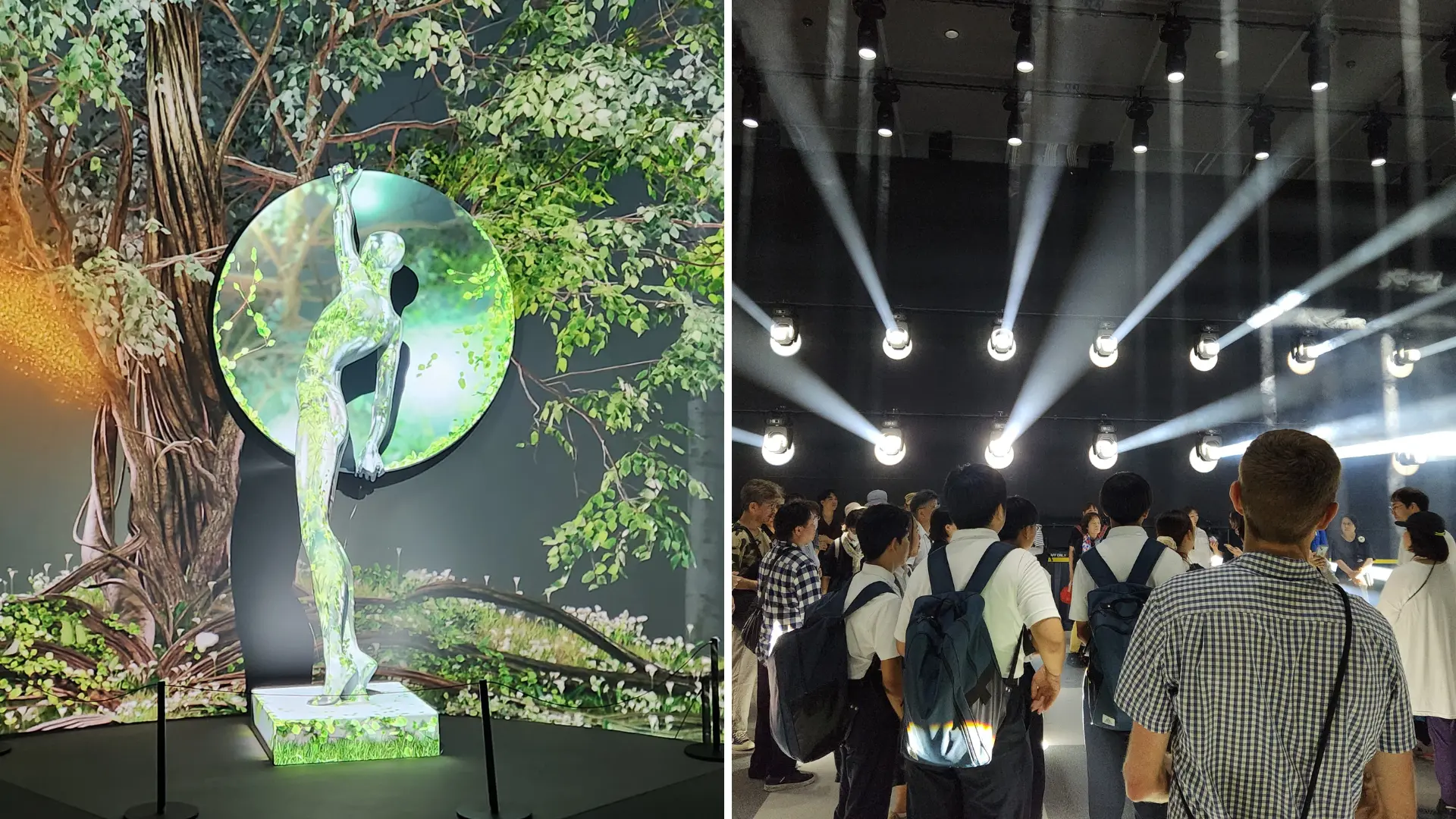
Silver Award: Belgium Pavilion
Organizer: BelExpo
Design: Carré 7, Pirnay Engineering, Poly-Tech, Beyond Limits, Profirst, Dirty Monitor
Fabrication: One Designs, Barco, ShowTex Asia
By fusing the highest-quality projection with hypnotic content and sculptural objects, the Belgium Pavilion succeeded in amplifying immersion and impact. Artful imagery introduced heavy topics in a way that inspired introspection, while the experience itself encouraged thoughtful interpretation — the hallmark of a true masterpiece.
Bronze Award: Korea Pavilion
Organizer: Korea Trade-Investment Promotion Agency (KOTRA)
Design: Jin Bok Wee
Fabrication: SIGONGtech
Immersive, interactive, and cinematic, the Korea Pavilion offered an exemplary experience that engaged and captivated guests. A unique fusion of tactics — from lighting design to tactile engagements — resulted in a well-rounded and memorable pavilion that culminated in a K-pop performance that resonated with fans of both “K-pop Demon Hunters” and “Casablanca.”
For more information about the competition or The Experiential Design Authority, visit www.experientialdesignauthority.com.
About The Experiential Design Authority (TEDA):
The Experiential Design Authority is an international body that oversees global experiential design competitions, honoring exhibits, events, expos, and immersive experiences. The organization exists to provide affordable, unbiased, wholly transparent opportunities for experiential marketers and designers to earn global accolades for their hard work. TEDA is dedicated to honoring excellence in experiential design on a global scale. From stunning exhibits and immersive events to groundbreaking expos, we celebrate the creativity, innovation, and impact of experiential marketers and designers.



